

Zitierweise / cite as:
Payer, Alois <1944 - >: Chronik Thailands = กาลานุกรมสยามประเทศไทย. -- Chronik 1995 / B. E. 2538. -- 2. datiert. -- Fassung vom 2017-03-19. -- URL: http://www.payer.de/thailandchronik/chronik1995b.htm
Erstmals publiziert: 2012-10-23
Überarbeitungen: 2017-03-19 [Ergänzungen] ; 2016-09-21 [Ergänzungen] ; 2016-09-06 [Ergänzungen] ; 2016-03-21 [Ergänzungen] ; 2016-02-12 [Ergänzungen] ; 2016-02-01 [Ergänzungen] ; 2016-01-03 [Ergänzungen] ; 2015-06-07 [Ergänzungen] ; 2015-04-07 [Ergänzungen] ; 2014-11-23 [Ergänzungen] ; 2014-11-03 [Ergänzungen] ; 2014-10-12 [Ergänzungen] ; 2014-09-23 [Ergänzungen] ; 2014-08-18 [Ergänzungen] ; 2014-02-21 [Ergänzungen] ; 2013-12-09 [Ergänzungen] ; 2013-10-01 [Ergänzungen] ; 2013-06-11 [Ergänzungen] ; 2013-05-24 [Ergänzungen] ; 2013-04-26 [Teilung des Jahrgangs] ; 2013-04-16 [Ergänzungen] ; 2013-03-05 [Ergänzungen] ; 2013-02-01 [Ergänzungen] ; 2013-01-13 [Ergänzungen]
©opyright: Dieser Text steht der Allgemeinheit zur Verfügung. Eine Verwertung in Publikationen, die über übliche Zitate hinausgeht, bedarf der ausdrücklichen Genehmigung des Herausgebers.
Dieser Text ist Teil der Abteilung
Thailand von
Tüpfli's Global Village Library
ช้างตายทั้งตัวเอาใบบัวปิดไม่มิด
|
Gewidmet meiner lieben Frau Margarete Payer die seit unserem ersten Besuch in Thailand 1974 mit mir die Liebe zu den und die Sorge um die Bewohner Thailands teilt. |
|
Bei thailändischen Statistiken muss man mit allen Fehlerquellen rechnen, die in folgendem Werk beschrieben sind:
Die Statistikdiagramme geben also meistens eher qualitative als korrekte quantitative Beziehungen wieder.
|
1995-01
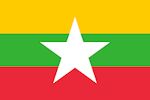
Birmanische Regierungstruppen erobern das Hauptquartier der Karen National Liberation Army (ကရင်အမျိုးသား လွတ်မြောက်ရေး တပ်မတော်) in Manerplaw.
Abb.: Lage von Manerplaw
[Bildquelle: OpenStreetMap. -- Creative Commons Lizenz (Namensnennung, share alike)]
1995-01-01

Die World Trade Organization (WTO) nimmt ihre Arbeit auf. Ziel der WTO ist der Abbau von Handelshemmnissen (Freihandel). Erster Generaldirektor ist bis April 1995 der bisherige (seit 1993) GATT-Generaldirektor, der Ire Peter Sutherland (1946 - )
1995-01-08

Tod von Luang Phu Chob Thanasamo (หลวงปู่ชอบ ฐานสโม, geb. 1901), Abt von Wat Pa Sammanusorn (วัดป่าสัมมานุสรณ์), Amphoe Wang Saphung (วังสะพุง), Provinz Loei (เลย). Er hatte lange Zeit im Dschungel gewohnt, wo ihm wilde Tiere, aber angeblich auch verschiedenerlei Gespenster und andere Gespinste begegneten.
Abb.: Luang Phu Chob Thanasamo (หลวงปู่ชอบ ฐานสโม)
Abb.: Das Königspaar bei Luang Phu Chob Thanasamo (หลวงปู่ชอบ ฐานสโม)
Abb.: Lage von Amphoe Wang Saphung (วังสะพุง)
[Bildquelle: OpenStreetMap. -- Creative Commons Lizenz (Namensnennung, share alike)]
1995-01-09

Abb.: Sanitsuda Ekachai (สนิทสุดา เอกชัย)
[Bildquelle: FAO]Bangkok Post: Sanitsuda Ekachai (สนิทสุดา เอกชัย, 1955 - ): "Return of the goddess"
Über den Guanyin-Kult, der bei Frauen der reichen (meist chinesischstämmigen) Mittelklasse immer beliebter wird. Voraussetzung für den Schutz durch die Mahayana-buddhistische Göttin Guanyin (觀音, เจ้าแม่กวนอิม) ist Vegetarismus, besonders Enthaltung von Rindfleisch. Deswegen sind die meisten Rindfleisch-Nudel-Küchen in Bangkok schon Pleite gegangen. Der Kult selber ist ein synkretistisches Konglomerat von chinesischen, indischen und Thai-Elementen und Gottheiten. Guanyin ist die Göttin der Händlerinnen geworden.
Es gibt in Bangkok viele "Paläste" (ตำหนัก) für weibliche Medien von Guanyin. Der größte ist in Soi Chokchai 4 (ซอยโชคชัย 4), Lat Phrao Rd. (ถนนลาดพร้าว). Theravada-Klöster stellen inzwischen auch Guanyin-Statuen auf, um nicht aus dem Geschäft zu kommen.
Einige Aussagen von Kuan-Yin-Anhängern:
Geschäftsfrau Chaluay Sangkhadham (50): "Her compassion is boundless. Whatever I ask of her, I get. My business is going well. My frail health has improved. As her follower, I’ve been a vegetarian for more than 10 years. I pray to her, practise dhamma, and meditate. And I do business in an honest way. She shows us that our good deeds will be rewarded."
Hausfrau Rosukhon Marayat (37)
"Goddess Kuan Yin reassures me that my husband won’t stray and that my children won’t be problematic. She makes me feel safe." "I feel pure and independent. I can practise dhamma at my own pace without having to be a nun living at a temple." "As a woman, I feel closer to her," added Rosukhon. It’s like a dialogue between women. She understands our condition better. Besides, my husband prefers that I worship the goddess rather than monks, what with the sexual scandals going on now." "We have to invest our faith in her. And only pure faith will be returned. Bangkok may be hostile and life full of pitfalls, but we feel safe being loved."
Katholischer (!) Geschäftsmann Charoen Wongpiyachetchai (36)
"By worshipping her, we are worshipping the endless love of motherhood. Bangkok is such a lonely and dangerous place, and people don’t trust one another anymore. Mother Goddess Kuan Yin makes me feel protected. Life and business would be much easier if everyone practised the morality Mother Goddess Kuan Yin teaches her children."
Unternehmerin Niramol Wongpiyachetchai:
"Our business has taken a turn for the better since my husband and I began worshipping her. Our health has improved since we’ve become vegetarians, and my husband stopped being unfaithful after he started meditating and going to the temple with me."
Zitate in: Sanitsuda Ekachai (สนิทสุดา เอกชัย) <1955 - >: Keeping the faith : Thai Buddhism at the crossroads. -- Bangkok : Post Books, 2001. -- 322 S. : Ill. ; 23 cm. -- ISBN 974-228-016-9. -- S. 189 - 196]
Abb.: Guanyin (觀音, เจ้าแม่กวนอิม), Wat Suwan (วัดสุวรรณ), Bangkok, 2009
[Bildquelle: hkgalbert / Wikimedia. -- GNU FDLicense]
1995-01-09
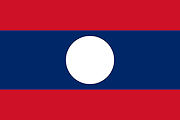
Tod des laotischen "roten Prinzen" und ersten Staatspräsidenten des kommunistischen Laos Souphanouvong (ສຸພານຸວົງ, 1909 - 1995)
1995-01-27

Der Name der unbekannt bleiben wollenden Spenderin von 600 Mio. Baht für den Bau eines dritten buddhistischen College in Bangkok wird bekannt: Frau Namthong Khunvisal, die im August 1994 im Alter von 97 Jahren gestorben war.
1995-02
Rome Club in Bangkok geht ein. Rome Club war seit den 1970er Jahren ein beliebter Homosexuellen-Club. Er war der Bahnbrecher dafür, dass Silom Soi 4 (สีลม ซอย 4) zu einem Vergnügungszentrum für Homosexuelle wurde. 1994 hatte der Besitzer des Rome Club plötzlich entschieden, Homosexuelle nicht mehr zuzulassen.
Abb.: Lage von Silom Soi 4 (สีลม ซอย 4)
[Bildquelle: OpenStreetMap. -- Creative Commons Lizenz (Namensnennung, share alike)]
1995-02-01
Tod des Luk Thung (ลูกทุ่ง) Sängers Thun Thongchai (ทูล ทองใจ, geb. 1929). Er ist der Hauptverstreter des weich-romantischen Stils des Luk Thung (ลูกทุ่ง).
Künstlerlink auf Spotify:
URI:
spotify:artist:4KjNAqmhBK7EOd2WqJvt3j
URL:
https://open.spotify.com/artist/4KjNAqmhBK7EOd2WqJvt3j
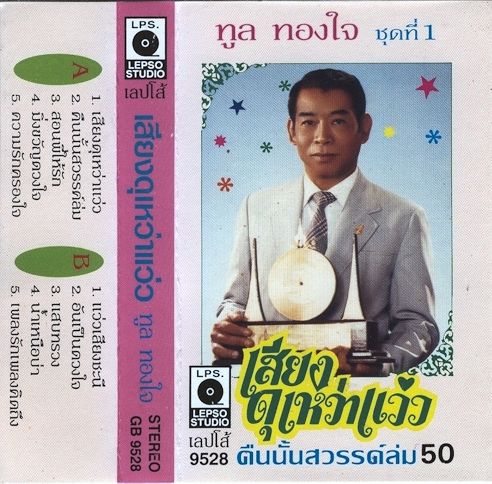
Abb.:
Kassettentitel
[Fair use]
1995-02-03

Ministerpräsident Chuan verteidigt einen Vertrag, der die Lieferung von Erdgas aus Myanmar über eine Pipeline nach Thailand sichert. Der Vertrag sei eines, der Umgang Myanmars mit den Minderheiten eine andere Sache. Außerdem sei der Vertrag nicht mit Myanmar direkt geschlossen, sondern mit französischen und amerikanischen Gesellschaften.
Abb.: Yadana-Erdgas-Pipeline
[Bildquelle: ©Total in Myanmar : a sustained commitment. -- http://burma.total.com/en/publications/sustained_commitment.pdf. -- Zugriff am 2011-12-22. -- Fair use]
1995-02-05

Tod von Prinz Bhanubandhu Yugala (พระเจ้าวรวงศ์เธอ พระองค์เจ้าภาณุพันธุ์ยุคล, 1910 - 1995).
Abb.: Prinz Bhanubandhu Yugala (พระเจ้าวรวงศ์เธอ พระองค์เจ้าภาณุพันธุ์ยุคล)
[Bildquelle: th.Wikipedia. -- Public domain]
"Prinz Bhanuband Yugala (auch Bhanubandh Yukhon, Prinz Bhanu, พระเจ้าวรวงศ์เธอ พระองค์เจ้าภาณุพันธุ์ยุคล, Aussprache: [pʰrá.ʤâo.wo.ra.woŋ.tʰə pʰrá.ʡoŋ.ʤâo pʰa.nú.pʰan.jú.kʰon]; * 27. November 1910 in Songkhla; † 5. Februar 1995 in Bangkok[1]) war ein thailändischer Regisseur, Filmproduzent, Drehbuchautor, Komponist und Schriftsteller. Prinz Bhanuband war ein Enkel von König Chulalongkorn (Rama V.), Sohn von Yukhon Thikhamporn und trug den Spitznamen Sadet Ong Chaiyai. Die zwischen 1978 und 1991 mit dem Thronfolger Vajiralongkorn verheiratete Prinzessin Soamsawali ist seine Enkelin, und der Filmregisseur Chatrichalerm Yukol sein Neffe.
Junge JahrePrinz Bhanuband wurde von Königin Sripatcharintra persönlich aufgezogen, bis er drei Jahre alt war, und erhielt später seine Ausbildung an der Thepsirin-Schule und später in Frankreich. Er lebte in seinen Jugendjahren (nach 1922) auch in England und den USA, bevor er in den Dreißiger Jahren nach Siam, dem späteren Thailand, zurückkehrte und in die Kavallerieabteilung der Königlichen Thai Armee aufgenommen wurde. Neben seinen militärischen Aufgaben beschäftigte er sich mit dem Filmemachen.
1936 gründete Prinz Bhanubands jüngster Bruder, Prinz Anusorn Mongkolkarn, die Firma Lavoe Motion Pictures und produzierte deren ersten Film Naam Yok Ok (Der Dorn in deiner Seite). Bhanuband folgte 1938 mit der Gründung seiner eigenen Gesellschaft, der Thai Film Company, die 1938 den ersten Film Tharn Fai Kao (Die alte Flamme) herstellte. Während des Zweiten Weltkriegs wurde die Gesellschaft aufgelöst und die Anlagen an die thailändische Luftwaffe verkauft. Filmhistoriker nehmen an, dass die Filme während dieser Zeit verloren gegangen sind[2].
NachkriegsjahreNachdem Prinz Bhanuband 1942 das Stück Phantay Norasingh (Ruderer Norasingh) verfasst hatte, produzierte er nach dem Krieg einen Film mit seiner neuen Produktionsgesellschaft Assawin Pictures, für den er den renommierten Regisseur Rattana Pestonji verpflichtete. Auch einen Film über das Leben von und die Legenden um König Naresuan den Großen (reg. 1590 bis 1605).
Prinz Bhanuband beförderte Innovationen in der thailändischen Filmindustrie und gab dafür oft sein eigenes Vermögen aus, um weniger gut bemittelte Regisseure zu unterstützen. Er führte den 35-mm-Film ein, der bald den bisherigen Standard 16-mm-Film ablöste. Auch den ersten thailändischen Film in CinemaScope, Ruen Phae (Flusshaus), eine Co-Produktion mit Shaw Brothers.
Auch die Filmmusik zu mehreren seiner Filme komponierte Prinz Bhanuband selbst. Sein Tai Ton Rang wurde als erster thailändischer Roman ins Englische übersetzt.
Am 5. Februar 1995 starb Prinz Bhanuband in Bangkok an den Folgen einer Blutvergiftung.
Einzelnachweise
- ↑ The Nation vom 11. Februar 1995
- ↑ The Nation vom 11. Februar 1995
[Quelle: http://de.wikipedia.org/wiki/Bhanuband_Yugala. -- Zugriff am 2011-10-08]
1995-02-16


Ein Franzose, der sich in der ersten Klasse eines Flugs von Thai Airways über die gleichzeitig anwesende Prinzessin Chulabhorn (จุฬาภรณวลัยลักษณ์) unehrerbietig geäußert hatte, wird von der Anklage der Majestätsbeleidigung (lèse-majesté) freigesprochen. Seine Verhaftung hatte in Frankreich zu Boykottaufrufen gegen Thai Airways geführt. Mit einer kuriosen juristischen Konstruktion wird er freigesprochen, damit er keine Schadensersatzforderungen an Thai Airways richten kann.
1995-02-21

Bangkok Post: Thais sind die wichtigsten Investoren in Laos:
37% alle Projekte
60% des gesamten Kapitals
1995-02-24
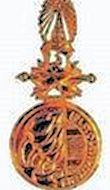
Zu National Artists (ศิลปินแห่งชาติ) werden ernannt:
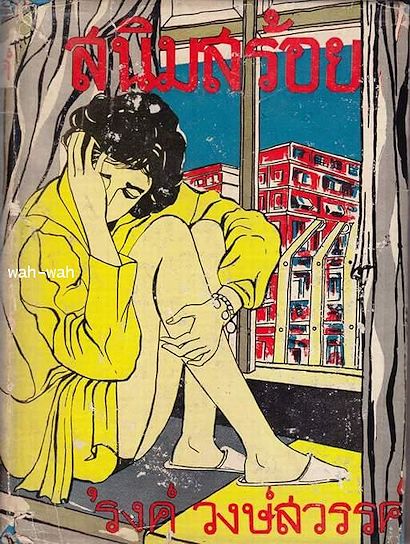
Abb.: Einbandtitel eines Buchs von Rong Wongsa-vun
(นาย 'รงค์ วงษ์สวรรค์)
[Fair use]
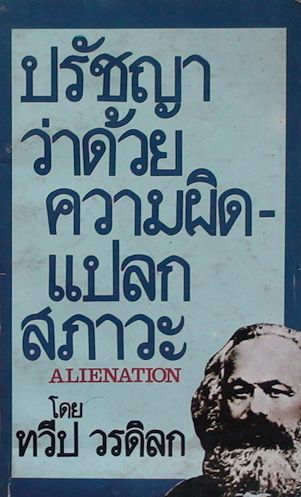
Abb.: Titel eines Buchs von Thaweep Voradiloke (นายทวีป วรดิลก
= ทวีปวร = กฤษณ์ วรางกูร = เทอด ประชาธรรม)
[Fair use]
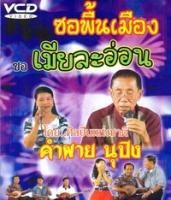
Abb.: VCD-Titel von Kamphai Nuping (นายคำผาย นุปิง)
[Fair use]
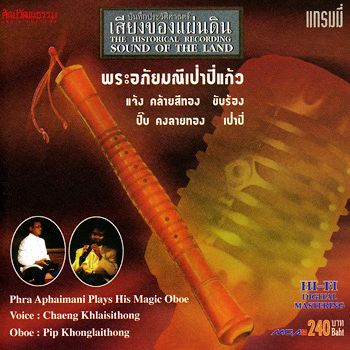
Abb.: Titel einer CD mit Jang Klayseethong (นายแจ้ง
คล้ายสีทอง)
[Fair use]
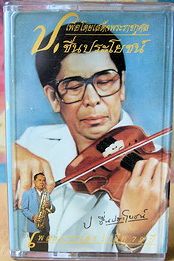
Abb.: Kassettentitel von Pruang Chuenprayoth (นายเปรื่อง ชื่นประโยชน์
= ป. ชื่นประโยชน์)
[Fair
use]
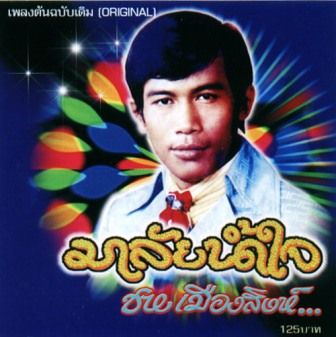
Abb.: CD-Titel von Somsian Phantong (นายสมเศียร พานทอง
= ชาย เมืองสิงห์)
[Fair
use]
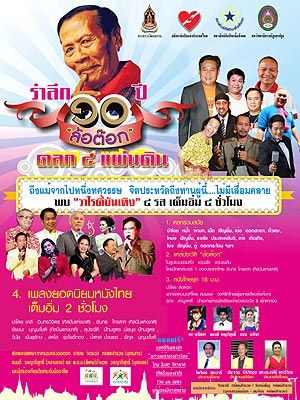
Abb.: Plakat zu Veranstaltung zum 10. Todestag von Sawong Supsamruay (นายสวง ทรัพย์สำรวย
= ล้อต๊อก)
[Fair use]
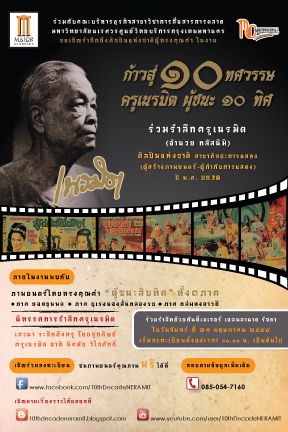
Abb.: Plakat für Amnuey Neramit (นายอำนวย เนรมิต
= ครูเนรมิต), 1995
[Fair
use]
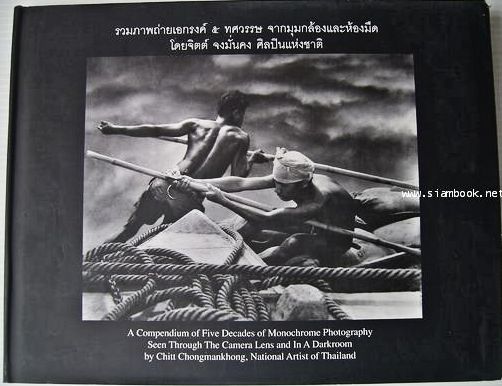
Abb.: Einbandtitel eines Buchs über Chitt Chongmankhong
(นายจิตต์ จงมั่นคง
[Fair
use]
1995-02-26

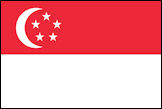
Bankrott der britischen Investmentbank Barings Bang (gegründet 1717). Riskante und unerlaubte Zins- und Indexspekulationen des Terminhändlers Nick Leeson (1967 - ) in Singapur führten zu einem Verlust von 1,4 Milliarden US-Dollar.
Abb.: Einbandtitel
1995-03
Erstausgabe der Zeitschrift
art4d : architecture, design, arts <Bangkok>. -- ISSN 0859-161X. -- Erscheint 11mal jährlich
Abb.: Einbandtitel
1995-03

Nach Angriffen durch Shan-Rebellen (တႆး) wird der Grenzübergang Mae Sai-Tachilek (แม่สาย - တာချီလိတ်) fast ein Jahr lang gesperrt.
Abb.: Lage des Grenzübergangs Mae Sai-Tachilek (แม่สาย - တာချီလိတ်)
[Bildquelle: OpenStreetMap. -- Creative Commons Lizenz (Namensnennung, share alike)]
1995-03-04
General Prem Tinsulanonda (พลเอก พลเรือเอก พลอากาศเอก เปรม ติณสูลานนท์, 1920 -) hält in Manila (Philippinen) vor Mitgliedern der philippinischen Armee eine Rede "Thai Experience in Combating Insurgency". Auszüge:"
"For me, it began 22 years ago towards the end of 1973. I was assigned to the Second Army Region in the Northeast of Thailand, well known then as the hotbed of communist insurgency. Though I vaguely knew that the situation there had become critical, I had little or no true knowledge of the problem. On the second day of my arrived, I lost twenty-three of my men in one single ambush. The whole town barely had enough coffins to put them in. I was plunged into the depths of sadness—lost for an answer. It took us quite a while to grasp the nature of the problem. Suffice it for me perhaps to point out certain salient features.
First, communist infiltration into the local populace was so deep-rooted, so widespread that we had no means of knowing foes friends. Every day, we would be fired on by those whom we mistook as friends or we ourselves would be firing on people mistaken as foes. Unless this basic question could be resolved, there was not the remotest chance that we could be resolved; there was not the remotest chance that we could even begin to grapple with the situation.
Second, this had to do with the perception each side had of the other. In my early days, my own perception of the self-styled Communist Party of Thailand or CPT and their sympathizers was one of the invading enemies from some foreign land, people who must be put down at all cost. And certainly I was not alone in harboring that kind of an attitude, which had over time been seeping into our collective mentality. Nor could I, at the same time, understand why local inhabitants were full of mistrust for the authorities in all the manifestations. As soon as we set foot in a village, their villagers would run away; at best, they would ignore our presence and instantly clamp up upon our approach. The misperception and the distrust were evidently mutual.
This leads me to my third point, that is, trying to identify the cause of this mistrust. Of course, we had heard of oppressive practices which officialdom in remote areas were prone to. But to come across it at first hand made us intensely conscious of the intimidation, the harassment and exploitation, which had become all too routine. Once we succeeded in getting the villagers to talk to us, we learned of extortions, of husbands and sons being summarily “put away” at the slightest suspicion or of daughters being abducted to satisfy the casual needs of someone or another. In short, officialdom was its own enemy, turning ordinary villagers into communist sympathizers determined to avenge the wrongs perpetrated.
Lastly, people in the rural Northeast at the time were so poor that they more or less became economic outcasts. They were living a hand to mouth existence at the very outer edge of society. For them, food was whatever could be gathered at large, day-to-day or moment-to-moment. They had no schooling, thus condemned to a similarly bleak future.
Generally, villages were inaccessible. One day, having covered some distance on foot on the way to a village, we came across coconut trees. Tired and thirsty, we asked the owner who was standing nearby if we could buy some coconuts. He happily brought over the coconuts, Asked how much we should pay for the coconuts, he said that he didn’t know because he had never sold a coconut in his life, To me, this showed the extent of the neglect, People were being abandoned to an existence beyond the pale of society.
I for one did not subscribe to the view that the insurgency was a question of ideological struggle. It was poverty and neglect that were the fertile soil on which the CPT could easily sow the seeds of discontent.
Distinguished Guests,
As you can see, we were caught in a vicious spiral: mistrust begat mistrust, violence begat violence. The magnitude of the problem was such that we could not hope to solve it all at once, but a start had to be made somewhere. The first step was to win trust. We went in and offered to help: teaching children to read, tilling the fields, tending to the sick or doing whatever chores they would let us. I distinctly remember one village, which was especially difficult. The first time our men went in they had to pitch camp outside the village because they would not be let in. Villagers just hurled insults and abuses at them. Luckily, the man we picked to lead that squad was a man of understanding and perseverance. Thought repeatedly turned away, he would always be back the next morning offering help to villagers working in the fields. It took all of seven months before the villagers started to feel sorry for our men and agreed to join in the Self-defense Volunteers Program.
This Self-defense Volunteers Program was later to become the thrust of our counter-insurgency campaign in that it served as the organizational framework for dialogue and interaction with the villagers at grassroots level. The Program took on life from an initiative of a local District Officer whose commitment to his work was total. He went around recruiting local teachers, village leaders or just acquaintances, engaging them in discussion on how best to organize and train self-defense volunteers to resist the CPT. We simply amplified on his initiative and extended it cover all other villages.
Volunteers began to trickle in and we also started to learn who our friends were. Even if there were CPT infiltrators among the volunteers, we would at least be able to keep an eye on them, to monitor their movements. We would know where they were and what they did at various times of the day and night. Some would vanish into the jungle at night and return to the village in the morning. In truth, the villagers themselves already knew who these so-called “jungle people” were It was a question gaining their trust and confidence before they were prepared to tell us what they knew.
It was within the framework of this Program too that we made sure the villagers could also distinguish between friends and foes, between the good and the bad elements within the bureaucracy. A mechanism was put into place enabling us to effect the instant removal of the bad elements from the scene once they were identified as such, with diplomacy action taken where needed, Justice had to be seen to be done for it to have any credibility.
What I have described were essentially measures to contain the CPT. By far the more formidable task was how to tackle the widespread poverty, which we saw as the root cause of insurgency and indeed all social ills. The Second Army Region, despite being the unified command of military and civilian resources in the Northeast, had its obvious limitations. We had to do the best we could. We started by identifying three main areas in which we could be of help to the villagers: means of subsistence, schooling and health care. In all these areas, the aim was to “help them help themselves”.
We simply did not have enough budgets to give handouts, nor did we have enough manpower to carry out the work on that scale. If money was given out, it was for seeds, farming tools, poultry stocks or fish stocks for the ponds. Volunteers in each locality served as manpower; once trained, they were put to work applying and extending their newly acquired skills, be it in teaching or in rudimentary medical knowledge. The response we had from the volunteers, all of whom worked without pay or personal gain, went beyond anything I had expected or indeed had any right to expect.
Distinguished Friends,
The above account represents the separate pieces, which came together forming the policy known as “politics before military”. Experience gained in the Second Army Region was then extended to all other Army Regions when I became Commander-in-Chief of the Royal Thai Army.
Subsequently, “Politics before Military” became the underlying rationale of Prime Minister’s Order No. 66/23, which during my time as Head of Government, came to stand as the clear policy directive for all Government agencies in the country-wide effort to put an end to insurgency by peaceful means. Someone has rightly observed that it was a time when guns were replaced by words.
In retrospect, it may be asked, what made it work? In my mind, the most important thing was what we had together, call it “Shared conviction” or “common resolve” if you will, which cut across all barriers. From the Commanding General to the privates, from the Provincial Governor to the Village Heads, from the District Officer who was behind the Self-defense Volunteers Program, the platoon leader who never gave up despite seven months of insults and abuses to the young men and women who volunteered as teachers and medical trainees, all pulled together selflessly as Thais in the fight to win back their country and fellow countrymen from the clutches of the CPT.
Together, the Thai nation found the way-our way, to end the hatred and killing between brothers and compatriots. The result, as you know, made us all very proud. I know that the Philippines also has her way; and in my heart, I know that your way will be rewarded with the success it deserves, and it too will become a source of pride for all the people of this great nation.
[Quelle: http://www.generalprem.com/Speech4.html. -- Zugriff am 2014-08-18. -- Fair use for documentation purposes]
1995-03-08
Internationales Frauentag (วันสตรีสากล). Bei der Demonstration in Bangkok sind die beiden größten Gruppen die professionellen Sexarbeiterinnen und die Fabrikarbeiterinnen.
1995-03-09
Bangkok Post: Suthon Sukphisit (สุธน สุขพิสิฐี): Last of a dying breed
Über Prasom Susutthi (1922 - 2011), Phetchaburi (เพชรบุรี), einen der letzten, der seit 1969 aus weichen Bananenstämmen Dekorationen (thaeng yuak) für Bestattungen und andere Feste schnitzt. Verwendet wird die tani-Varietät (ตานี) der Banane. Eine vollständige Dekoration für eine Bestattung kostet ca. 15.000 Baht. Arbeitszeit: ca. 8 Stunden. Früher waren die Motive Ereignisse im Leben Buddhas, jetzt sind es vorwiegend Motive mit einem Bezug zum Verstorbenen (z.B. Früchte, die dieser mochte). Das Geschäft geht aber zurück, da in Stätten Kremationen im Freien verboten sind.
Abb.: Lage von Phetchaburi (เพชรบุรี)
[Bildquelle: OpenStreetMap. -- Creative Commons Lizenz (Namensnennung, share alike)]
1995-03-12

Seine Majestät wird einer Angioplastie unterzogen, da er verengte Blutgefäße hat. Während seiner Rekonvaleszenz widmet sich Seine Majestät der Lösung der grauenhaften Verkehrsprobleme Bangkoks. Eine große Menge Königstreuer gibt im Wat Bowonniwet (วัดบวรนิเวศวิหารราชวรวิหาร) 999 Mönchen Speise, um die Heilung seiner Majestät zu beschleunigen.
Abb.: Lage des Wat Bowonniwet (วัดบวรนิเวศวิหารราชวรวิหาร)
[Bildquelle: OpenStreetMap. -- Creative Commons Lizenz (Namensnennung, share alike)]
1995-03-16

Thailand und Laos unterzeichnen einen Grundlagenvertrag über Thailands langfristigen Bezug von Elektrizität aus dem Wasserkraftwerk Nam Theun II (ເຂື່ອນນ້ຳເທີນ 2) in Laos.
Abb.: Lage von Nam Theun II (ເຂື່ອນນ້ຳເທີນ 2)
[Bildquelle: OpenStreetMap. -- Creative Commons Lizenz (Namensnennung, share alike)]
Abb.: Nam Theun II (ເຂື່ອນນ້ຳເທີນ 2)
[Bildquelle: ©Google earth. -- Zugriff am 2011-12-20]
"The Nam Theun 2 Hydropower Project, or simply NT2, is a hydroelectric dam located on the Nam Theun River in Laos. Commercial operation of the plant began in March 2010. The scheme diverts water from the Nam Theun, a tributary of the Mekong River (ແມ່ນ້ຳຂອງ), to the Xe Bang Fai River, enabling a generation capacity of 1,070 MW, from a 350 m (1,148 ft) difference in elevation between the reservoir and the power station. It is the largest hydroelectric project so far in Laos, exporting power to Thailand and supplying the local area with electricity. At the time of signing in 2005, NT2 was the largest foreign investment in Laos, the world's largest private sector cross-border power project financing, the largest private sector hydroelectric project financing, and one of the largest internationally-financed IPP projects in Southeast Asia. The dam also marked a return by the World Bank to funding large-scale infrastructure, after a decade-long hiatus.
According to the government of Laos, "the project is an essential part of the country's development framework and the Project's implementation is likely to be the first real possibility for (Laos) to reduce gradually its dependence on Official Development Assistance".
The project has environmental and social impacts, and comprehensive measures have been designed to mitigate these. According to a group of social and environmental experts who advise on the project, these measures could become a global model. Although Newsweek magazine referred to it as a "kinder and gentler dam", the project also attracted criticism.
History and current statusThe Nam Theun 2 project was identified in the 1980s and a concession was awarded in 1993. It was subjected to a long anti-dam campaign. The project was frozen after the 1997 Asian financial crisis, but preparation resumed in 1999. In October 2002 a concession contract between the NTPC and the government of Laos was signed, followed by the signing of PPAs between NTPC on the one hand and, EGAT (การไฟฟ้าฝ่ายผลิตแห่งประเทศไทย) and the Laotian state-owned power company Electricite du Laos on the other hand in November 2003. Financial closing was reached in June 2005. The Nam Theun river diversion was created in March 2006 and then closed in April 2008 following completion of the Nakai Dam wall. Impoundment of the Nakai Reservoir occurred over the 2008 wet season and the reservoir was close to full supply level by the end of 2008. Test hydropower generation began in mid-2009 and the Commercial Operation Date was achieved in April 2010.
Technical features
NT2 enables Laos to export 995 MW of electrical energy to the EGAT. The project also uses 75 MW of capacity to supply electricity for domestic use in Laos.
Nam Theun 2 is a trans-basin diversion power plant that uses water from the Nam Theun River and releases the water into the Xe Bang Fai River. The project site is in Khammouane (ຄໍາມ່ວນ) and Bolikhamxay (ບໍລິຄໍາໄຊ) provinces in central Laos, about 250 kilometers east of Vientiane. It stretches from the Nakai Plateau to the lower Xe Bang Fai River confluence with the Mekong.
The main features of the project include:
Institutional arrangements
- 39 m (128 ft) high gravity dam
- 450 km2 (170 sq mi) reservoir
- Pressure shaft, pressure tunnel and a powerhouse
- 8,000,000 m3 (280,000,000 cu ft) artificial regulating pond, and a 27 km (17 mi) artificial downstream channel leading to the Xe Bang Fai River
- 130 km (81 mi) long, double-circuit 500 kW transmission line to the Thai grid
- 70 km (43 mi) long, single-circuit 115 kV transmission line to Laos' domestic grid.
The Project is structured as a BOT project. It has a concession period of 31 years, of which the operating period is 25 years. At the end of the concession period, the project facilities will be transferred to the government free of charge.
The project was developed by NTPC, which is owned by a consortium comprising EDF (35%), EGO of Thailand (25%), the ITD of Thailand (15%) and the Government of Laos (25%). Governments and government-owned enterprises own a majority of NTPC. This situation is atypical for an IPP - normally the power generating company is privately owned.
Laos is a People's Democratic Republic with a one-party system under the Lao People's Revolutionary Party (ພັກປະຊາຊົນປະຕິວັດລາວ). It is one of the few communist states in the world.
The government has multiple roles related to NT2, some of which may be conflicting: It partially owns NTPC and thus has an interest in the financial profitability of the project; it is supposed to monitor compliance with environmental and social safeguards under the concession contract; and it buys some of the electricity generated from the project through the state-owned power company EDL and thus has an interest in low electricity prices.
Some of the owners of NTPC are also contractors engaged in the construction of the dam. For example, EDF International is the head contractor for the entire project under a turnkey contract. It has engaged various sub-contractors for specific parts of the project.
Financial aspectsProject costs and financing
Construction costs were initially estimated at US$1,250 million plus US$331.5 million for contingencies. More recently construction costs have been given as US$ 1,3 billion.
The project base cost is funded through US$330m of equity and US$920m of debt. It is financed through equity, loans and guarantees from 26 financial institutions, including
- four multilateral development banks (the World Bank Group, the Asian Development Bank (ADB), the European Investment Bank (EIB) and the Nordic Investment Bank),
- three Export Credit Agencies (Coface of France, EKN of Sweden and GIEK of Norway),
- three bilateral financing agencies (French Development Agency, PROPARCO and the Export-Import Bank of Thailand),
- nine international commercial banks providing finance in hard currencies (grouped together in a "lead arrangers group" including BNP Paribas, Crédit Agricole Indosuez, ANZ from Australia, Société Générale, Fortis Bank and Bank of Tokyo-Mitsubishi), and
- seven Thai commercial banks providing finance in Thai Baht.
All financing in hard currencies is guaranteed through political risk insurance provided by the above-mentioned three export credit agencies, the ADB (US$ 50m), the International Development Association (IDA) of the World Bank Group (US$ 50m) and the Multilateral Investment Guarantee Agency (MIGA) of the World Bank Group (US$ 91m). Specifically, MIGA has provided a US$86 million guarantee to Fortis Bank of Belgium against the risks of expropriation, breach of contract, war and civil disturbance, as well as transfer inconvertibility in both Laos and Thailand. According to MIGA, its guarantee "was key to lowering the project's risk profile, which in turn enabled the government and developers to attract commercial financing at better rates and gave the investor the assurance needed to go ahead with the deal".
The government's initial equity contribution of $83m (25%) was largely funded by donors, including a $20 million grant from the International Development Association of the World Bank Group, the ADB (US$ 20m), France, and the EIB.
Increase in government revenue and contribution to poverty alleviationAccording to the government "the Project is an essential part of the country's development framework and the Project's implementation is likely to be the first real possibility for (Laos) to reduce gradually its dependence on Official Development Assistance." In the same vein, the then Managing Director of the World Bank, Shengman Zhang, said in 2003 "We see Nam Theun 2 not as a project per se, but as a vehicle through which to make a considerable progress in the effort of poverty reduction." [2]
The project generates three forms of revenue to the government:
- dividends,
- taxes; and
- royalties, i.e. concession fees.
Government revenue is estimated at US$1.9bn to US$2bn in nominal terms over 25 years. It has been estimated that at a 10% discount rate the net present value of the revenues will be six times higher than the net present value from the debt service, if all government equity was funded through concessionary lending. Revenues are expected to increase progressively from approximately US$ 10 million in 2009 to US$ 110 to 150 million per year at the end of the concession period in 2033. Thereafter the government will receive all revenues accruing to the project.
The Power Purchase Agreement (PPA) between EGAT and NTPC was designed as to stabilize the cash flow despite hydrological variation and consequently variation in power output. Revenues will be partially in US$ and partially in Thai Baht. Power demand from Thailand is expected to be strong. In December 2007, Thailand and Laos signed an agreement increasing the total power to be supplied by Laos to Thailand from all sources in 2015 from 5,000 MW to 7,000 MW.
The World Bank works with the Lao government to improve public financial management practices and increase transparency in order to increase the likelihood that revenues will be used to benefit the poor, including through investment in health and education. The Government has agreed with the World Bank to implement a Poverty Reduction Fund that is being initially sourced from International Development Association funds, and then from the Government's taxes, royalties and dividend revenues once the project commences operation. Special administrative units are being established to deal with the effective management and allocation of the financial resources gained from the Project.
In 2007 Laos was ranked on the Corruption Perception Index by Transparency International 168 out of 179 countries assessed, making it one of the most corrupt countries on the index.
Environmental and social impactsEnvironmental and social impacts of the project include downstream impacts, impacts on biodiversity, resettlement and reservoir sedimentation. More details can be found in the Environmental and Social Impact assessment], and in the summary provided for the various impacts below.
Monitoring and Evaluation
NT2 has a multi-layer environmental and social monitoring and evaluation mechanism consisting of the following elements:
- A Panel of Environmental and Social Experts (POE), reporting to the government. The POE normally visits Laos at least once per year.
- An International Advisory Group(IAG), advising the World Bank. The IAG normally visits Lao PDR at least once per year.
- Independent Monitoring Agencies, reporting to the Government. The Independent Monitoring Agencies was in the process of being contracted in December 2006.
- The Lenders’ Engineer[10]
Praise
The comprehensive environmental and social measures designed to mitigate potential environmental and social impacts could become a "global model", according to a group of social and environmental experts who advise on the project.
Criticism
According to the NGO International Rivers, there have been substantial shortcomings in the mitigation of impacts. According to the organization, compensation payments and replacement land for villagers affected by construction activities have been "inadequate, unfair or non-existent". Poor resettlement planning has led to housing and infrastructure delays. Plans to restore the livelihoods of villagers on the Nakai Plateau and along the Xe Bang Fai have yet to be finalized. And the budget for the downstream program in particular is said to be woefully inadequate.
A good or a bad dam?
According to data in the World Bank publication "Good dams, bad dams", the ratio of area flooded and people resettled per Megawatt of installed electricity generating capacity (flooded area of 41 hectare per MW and 5 people resettled per MW) is neither very high, nor very low, compared to 48 other large dams analyzed. Using this specific analytical framework, Nam Theun 2 could neither be considered a "good" or a "bad" dam.
Downstream impacts in Xe Bang FaiThe flow of water in the Xe Bang Fai (XBF), which will receive the water diverted through NT2, will increase significantly, thus affecting the population living downstream of the release point.
The exact number of people affected is disputed. While NTPC speaks of 40,000 affected people, the NGO Environmental Defense speaks of up to 150,000 people. The impacts have been widely studied and have been discussed with local communities that will be affected. Possible negative impacts on the downstream population include the washing away of river-bank gardens, changes in water quality, and impacts on fisheries. The impacts will only be exactly known once the project has been completed.
NTPC has promised to stop power production when floods occur on the XBF river. However, it is as yet unknown exactly how long this flooding period will last for each year. The length of the period will affect the project's profitability.
Water quality may be negatively impacted through fouling of biomass in the reservoir. Because the impacts are unknown, monitoring systems will be included and a commitment has been made to "adaptive management".
Livelihood development programs are underway for the villagers living downstream on the XBF river, in districts such as Mahaxai. The programs are focused on agriculture, fish ponds and handicrafts to help them generate income beyond that derived from river fishing. The objective is to help villagers generate money from a variety of different sources to compensate for any changes in fishing catches after the river diversion. Affected communities expect to receive irrigation systems to allow for a second, dry season rice crop, drinking water systems and access to electricity. The provision of this infrastructure would not be the responsibility of NTPC, but of the government. Details of the these programs are available on the operating company's website.
According to a joint progress report issued by the World Bank and the ADB in December 2007 implementation of the downstream program – particularly on implementing livelihood programs – remained a challenge. Lessons from the 20 villages where the programs have been piloted in a participatory manner are being applied as other villages were included. Micro-credit schemes that are being developed were not yet on a sustainable financial footing.
Downstream impacts on the Nam Theun RiverThere is relatively little information on downstream impacts on the Nam Theun River, where water flows will be significantly reduced. No permanent villages lie along the Nam Theun some 50 km downstream below the dam. Fishermen and hunters, however, do use this stretch of the river. Fish diversity and abundance is expected to be affected by reduced water flows and sediment content.[15] However, monitoring of the villages along the river conducted by NTPC has so far not detected any significant impacts to the fishery.
Biodiversity and forestsThree existing protected areas on the Nakai plateau (the Nakai-Nam Theun, the Hin Nam Nor and the Phou Hin Poun National Biodiversity Conservation Areas), together nine times larger (4,106 km2) than the flooded area, are expected to be better managed through significant resources made available under the project - more than 60 times what the government has spent on its entire national parks system so far. The flooded areas are not considered critical natural habitat. There used to be significant illegal logging in the protected areas, which the government claims has now been largely brought under control. Detailed fish surveys showed that there are no fish species living only in the stretch of the river that will be inundated. A management plan for the Asian elephants in the area has been drawn up. A Watershed Management Protection Authority (WMPA) has been established with the specific purpose of protecting the watershed of the reservoir and the protected areas in it. WPMA will receive US$1 million annually from NTPC through the concession period.
Resettlement
6,300 people from 17 villages moved from the area that became the NT2 reservoir on the Nakai Plateau to custom-built villages built in consultation with the resettled communities. NTPC and the Lao Government have committed to doubling the income of resettled villagers, through livelihood programs, five years after they have been relocated. This means that people who used to make US$410 per household a year in 2005 should make at least US$820 per household a year by 2012.
Construction of the villages and major facilities (new roads, water pumps, toilets, schools, mills and electricity) was completed by mid-2008. Extensive consultations on house design, location and even construction materials were held and continue to ensure the outcomes reflect the wishes of the local people. According to a World Bank report, the health of villagers who have already been resettled has significantly improved due to better water and sanitation, regular health check-ups and the provision of mosquito nets, as documented by various assessments. Various experts are helping the resettled villagers to adopt improved practices to increase agricultural and income productivity. However the report stresses that the pace of the development of the livelihood activities must be accelerated including engaging additional technical assistance to help villagers develop the most effective cropping systems possible.8]
Reservoir sedimentationAt current sedimentation rates, the reservoir has a lifetime of more than five centuries. If substantial logging occurred in the upstream basin, the lifetime would be accordingly reduced and could affect the financial and economic viability of the project. This would especially be the case if sediments remained in the active storage area in the upper part of the reservoir instead of being washed into the dead storage area closer to the dam in the lower part of the reservoir. The establishment of the relatively well-funded Watershed Management Protection Authority is expected to protect forest cover and thus limit erosion in the watershed of the reservoir."
[Quelle: http://en.wikipedia.org/wiki/Nam_Theun_2. -- Zugriff am 2011-12-20]
1995-03-31

Abb.: Amita Tata Young - อมิตา ทาทา
ยัง, 2007
[Bildquelle: Sry85 / Wikipedia. --
Creative Commons
Lizenz (Namensnennung)]
Es erscheint das erste Album von Amita Marie Young (อมิตา มารี ยัง, 1980 - ) (aka. Amita Tata Young - อมิตา ทาทา ยัง): อมิตา ทาทา ยัง
Das Album auf Spotify:
URI: spotify:album:5HcMy5FUv3fDu9xlveDSOE
URL: https://open.spotify.com/album/5HcMy5FUv3fDu9xlveDSOEKünstlerlink auf Spotify:
URI: spotify:artist:1gTpnrpyXF3zutKZDcUCiU
URL: https://open.spotify.com/artist/1gTpnrpyXF3zutKZDcUCiU
"Tata Young (Thai ทาทา ยัง; * 14. Dezember 1980 in Bangkok; eigentlich Amita Marie Young) ist eine thailändische Popsängerin. Sie wurde als Tochter eines US-Amerikaners und einer Thai geboren. Karriere
Im Alter von elf Jahren nahm Tata am Thailand Junior Singing Contest teil und ging als Siegerin aus 5.300 Mitbewerbern hervor. Dieser Erfolg legte den Grundstein ihrer Karriere. 1994, im Alter von 14 Jahren, unterschrieb sie einen Plattenvertrag bei GMM Grammy, dem größten thailändischen Plattenlabel. 1995 erschien ihr Debütalbum „Amita Tata Young“ in thailändischer Sprache. Schon früh machte sie sich einen Namen über die Landesgrenzen Thailands hinaus. Von der chinesischen Regierung wurde sie 1997 ausgesucht, an einem Konzert anlässlich der Übergabe Hong Kongs von Großbritannien an China aufzutreten. Dabei trat sie unter anderem neben Künstlern wie Wet Wet Wet, Michael Learns to Rock, Lisa Stansfield, All-4-One und den Brand New Heavies auf.
Im Jahr 2004 wechselte Tata von BEC TERO Records zu Columbia Records Sony BMG und nahm dort ihr erstes englischsprachiges Album „I Believe“ auf, womit ihr dann der Durchbruch in ganz Asien gelang.
Am 24. August 2006 erschien nach „I Believe“ ihr zweites englischsprachiges Album „Temperature Rising“, welches ebenfalls ein riesiger Erfolg wurde.
Der bisher letzte Höhepunkt ihrer Karriere war ihr Auftritt bei der Eröffnungsfeier zur Fußball-Asienmeisterschaft 2007, wo sie einige ihrer größten Hits sang. Die Eröffnungsfeier wurde in ganz Asien und andere Teile der Welt live übertragen.
Im März 2008 erschien ihr bisher letztes Album „One Love“, welches sie wieder in thailändischer Sprache einsang.
Tata Young dürfte heute wohl die im asiatischen Raum bekannteste thailändische Künstlerin sein. In Thailand selbst gilt sie als eine der einflussreichsten Frauen. Jedoch hat sie auch in Thailand ihre wohl größten Gegner. Diese werfen ihr vor, sie habe einen negativen Einfluss auf die thailändische Jugend.
Momentan arbeitet Tata an ihrem europäischen „International Album“, geplante Veröffentlichung ist Februar 2010."
[Quelle: http://de.wikipedia.org/wiki/Tata_Young. -- Zugriff am 2011-11-14]
1995-03-31

Phra Yantra Amaro Bhikkhu (ยันตระ อมโรภิกขุ, 1951 - ), Gründer (1984) des Sunnataram Forest Monastery in Amphoe Sangkhla Buri (สังขละบุรี), Provinz Kanchanaburi (กาญจนบุรี), ein weltweit bekannter Mönch, verlässt endlich den buddhistischen Orden, nachdem er sich 15 Monate lang geweigert hatte, entsprechenden Anordnungen Folge zu leisten. Der Mönch hatte Sex mit vielen Frauen, weigerte sich einen DNA-Test in einem Vaterschaftsverfahren vornehmen zu lassen, brauchte in Australien und Neuseeland seine Kreditkarte, um Bordellbesuche zu bezahlen.
Abb.: Lage von Amphoe Sangkhla Buri (สังขละบุรี)
[Bildquelle: OpenStreetMap. -- Creative Commons Lizenz (Namensnennung, share alike)]
Abb.: Australien und Neuseeland
[Bildquelle: OpenStreetMap. -- Creative Commons Lizenz (Namensnennung, share alike)]
1995-03-06

Das Büro des Chularatchamontri (ฬาราชมนตรี), "State Counselor for Islamic Affairs", gibt bekannt, dass 1500 muslimische Thais in arabischen Ländern Islam studieren.
Abb.: Saudi-Arabien und Ägypten, die beiden wichtigsten arabischen Länder für Islam-Studium
[Bildquelle: OpenStreetMap. -- Creative Commons Lizenz (Namensnennung, share alike)]
1995-04/05

Birmanische Regierungstruppen und Soldaten der Democratic Karen Buddhist Army (DKBA, တိုးတက်သော ဗုဒ္ဓဘာသာ ကရင်အမျိုးသား တပ်ဖွဲ့) greifen Flüchtlingslager für Karen (ကရင်လူမျိုး, กะเหรี่ยง) in der Provinz Tak (ตาก) an.
Abb.: Lage der Provinz Tak (ตาก)
[Bildquelle: OpenStreetMap. -- Creative Commons Lizenz (Namensnennung, share alike)]
1995-04-02

40. Geburtstag von Prinzessin Sirindhorn ศาสตราจารย์กิตติมศักดิ์ ดร. พลเอกหญิง พลเรือเอกหญิง พลอากาศเอกหญิง สมเด็จพระเทพรัตนราชสุดา เจ้าฟ้ามหาจักรีสิรินธร รัฐสีมาคุณากรปิยชาติ สยามบรมราชกุมารี, 1955 -). Ihr Geburtstag wird erstmals als Tag des Erhalts des kulturellen Erbes Thailands (Thai Heritage Conservation Day - วันอนุรักษ์มรดกไทย) gefeiert.
1995-04-05

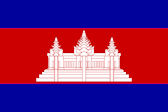
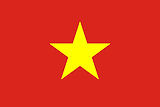
Thailand, Laos, Kambodscha und Vietnam unterzeichnen in Chiang Rai (เชียงราย) das "Agreement on Cooperation for the Sustainable Development of the Mekong River Basin" (แม่น้ำโขง, ແມ່ນ້ຳຂອງ, មេគង្គ, Sông Mê Kông).
Abb.: Unterzeichnerländer
[Bildquelle: CIA. -- Public domain]
1995-04-23

Ca. 400 Soldaten der Democratic Karen Buddhist Army (DKBA) überschreiten die Grenze nach Thailand bei Mae Hong Son (แม่ฮ่องสอน) und drohen, ein Karen-Flüchtlingslager (ကရင်လူမျိုး) anzugreifen, wenn die Flüchtlinge nicht nach Myanmar zurückkehren. Seit ihrer Abspaltung von der Karen National Union (KNU) 1994 hat die DKBA immer wieder Flüchtlingslager in Thailand angegriffen.
Abb.: Lage von Mae Hong Son (แม่ฮ่องสอน)
[Bildquelle: OpenStreetMap. -- Creative Commons Lizenz (Namensnennung, share alike)]
"Die Democratic Karen Buddhist Army (DKBA, တိုးတက်သော ဗုဒ္ဓဘာသာ ကရင်အမျိုးသား တပ်ဖွဲ့) ist eine Splittergruppe der myanmarischen Widerstandsbewegung Karen National Union (KNU, ကရင် အမျိုးသား အစည်းအရုံး), die sich 1994 von derselbigen getrennt und einen Separatfrieden mit der Militärregierung von Myanmar, dem State Peace and Development Council (SPDC, နိုင်ငံတော် အေးချမ်းသာယာရေး နှင့် ဖွံ့ဖြိုးရေး ကောင်စီ), vereinbart hat. Seither bekämpft die DKBA auf der Seite des SPDC den Karen-Widerstand der KNU. Die DKBA besteht aus 4 Brigaden, der 333., 555., 777. und 999. Brigade. Bei vielen ihrer Mitglieder handelte es sich in der Vergangenheit um ehemalige Offiziere und Soldaten der Karen National Liberation Army (ကရင်အမျိုးသား လွတ်မြောက်ရေး တပ်မတော်), des bewaffneten Flügels der KNU. Zur Zeit versucht sie aber Unabhängige in ihre Ränge zu rekrutieren.
Die DKBA gilt bei vielen Karen als Verräter. DKBA-Funktionäre behaupten, dass es aufgrund der Diskriminierung der Buddhisten in der KNU zur Abspaltung kam. Die KNU wird primär von Karen christlichen Glaubens geführt. Die Waffen, Uniformen und den Sold der DKBA stellt der SPDC. Normalerweise operiert die DKBA nur im Zusammenschluss mit SPDC-Infanteriebataillonen. Das Hauptquartier der DKBA befindet sich in Myaing Gyi Ngu, auch als Khaw Taw bekannt, Gemeinde Lu Pleh, Pa'an-Distrikt, Karen-Staat.
Nach Quellen von DKBA und SPDC wurde die DKBA von einem buddhistischen Mönch mit Namen U Thuzana in Myaing Gyi Ngu gegründet. Als Grund der Rebellion wird der autoritäre Stil der KNU-Spitze angegeben. Der SPDC versprach U Thuzana und der DKBA Autonomie für den Karen-Staat, wenn sie helfen würden die KNU/KNLA zu bekämpfen.
Im Gegensatz zur Karen National Union wird der DKBA vorgeworfen, am Drogenschmuggel beteiligt zu sein. Man schätzt, dass die DKBA ungefähr 2.000 Mann stark ist. Die DKBA war wesentlich an der Eroberung des ehemaligen Hauptquartiers der KNU in Manerplaw am Saluen (သံလွင်မြစ်), dem Grenzfluss zu Thailand, beteiligt. Auch wird ihr vorgeworfen, Karen-Flüchtlingslager in Thailand überfallen und niedergebrannt zu haben. Zahlreiche Menschenrechtsverletzungen gehen auf das Konto der DKBA.
Der politische Arm der DKBA ist die Democratic Karen Buddhist Organisation."
[Quelle: http://de.wikipedia.org/wiki/Democratic_Karen_Buddhist_Army. -- Zugriff am 2011-12-20]
1995-05
Das Volunteer Defence Corps (Or Sor) (อส. = กองอาสารักษาดินแดน) beschlagnahmt in Amphoe Fang (ฝาง), Provinz Chiang Mai (เชียงใหม่), 10 Kg Heroin von Wa-Drogenschmuglern (ဝလူမျိုး). Zwei Or Sor werden dabei ernsthaft verletzt.
Abb.: Lage von Amphoe Fang (ฝาง)
[Bildquelle: OpenStreetMap. -- Creative Commons Lizenz (Namensnennung, share alike)]
Abb.: Wa (ဝလူမျိုး), ca. 1900
[Bildquelle: Wikipedia. -- Public domain]
1995-05
Es erscheint die Sammlung von 45 Gedichten aus der Zeit von 1991 bis 1995
ไพวรินทร์ ขาวงาม [Phaiwarin Khaongam] <1961 - >: ม้าก้านกล้วย ["Bananenstamm als Pferd"]
Bis 1998 erscheint es in 16. Auflage.
Abb.: Einbandtitel1995 erscheint auch eine zweisprachige Ausgabe mit englischer Übersetzung
ไพวรินทร์ ขาวงาม = Phaiwarin Khao-Ngam <1961 - >: ม้าก้านกล้วย = Banana tree horse and other poems / translated by B. Kasemsri [พีระพงศ์ เกษมศรี - Birabhongse Kasemsri, 1935 - 2000]. -- Bangkok : Amarin, 1995. -- 71 S. : Ill. ; 27 cm. -- ISBN 9748428354
Abb.: Einbandtitel der englischen Übersetzung
1995-05-01 - 1999-09-01

Der Italiener Renato Ruggiero (1930 - ) ist Generaldirektor der World Trade Organization.
1995-05-06

Anlässlich des 72. Geburtstags (6 x 12 Jahre) seiner Schwester, Prinzessin Galyani Vadhana (เจ้าฟ้ากัลยาณิวัฒนา, 1923 - 2008), verleiht ihr der König den Titel Krom Luang (กรมหลวง). Ihr voller Titel ist nun: ศาสตราจารย์ (พิเศษ) พลเอกหญิง พลเรือเอกหญิง พลอากาศเอกหญิง สมเด็จพระเจ้าพี่นางเธอ เจ้าฟ้ากัลยาณิวัฒนา กรมหลวงนราธิวาสราชนครินทร์
1995-05-10 - 1996-12-15

John M. Deutch ist Direktor des CIA.
Abb.: John M. Deutch, 1993
[Bildquelle: JAMES E. JACKSON / DoD / Wikipedia. -- Public domain]
1995-05-15
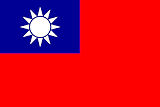
Tod von Sanguan Tularaksa (สงวน ตุลารักษ์, geb. 1902).
"Sanguan Tularaksa (June 18, 1902 - May 15, 1995; Thai สงวน ตุลารักษ์) was a Thai politician and a leading member of the Seri Thai (ขบวนการเสรีไทย). Sanguan is of Chinese descent, and is of Teochew (潮州人) origins.[1] A longtime Pridi (ปรีดี พนมยงค์ / 陳嘉祥, 1900 – 1983) acolyte and member of the 1932 coup group, Sanguan was a member of the National Assembly and Chairman of the Bureau of Tobacco Monopoly in the Ministry of Finance.
In 1943 he was made the leader of a delegation sent by the Free Thai Leader to establish contacts with the Allies at Chungking (重慶). His efforts proved crucial to the securing of British and American support for the underground movement, which would soon receive arms and equipment for effective guerilla operations.
In 1946 he was appointed ambassador to the Republic of China. He refused to return to Thailand following the coup d'état of 1947, declaring that the new constitution was illegitimate. Sanguan spent the next decade living in China. He returned to Thailand in 1957 and was jailed by the government of Field Marshal Sarit Thanarat (สฤษดิ์ ธนะรัชต์, 1908 - 1963). He was released in 1965."
[Quelle: http://en.wikipedia.org/wiki/Sanguan_Tularaksa. -- Zugriff am 2012-06-13]
1995-05-17


New York (USA): Die Carnegie Hall Jazz Band führt König Bhumibols Komposition H.M. Blues [Hungry Men's Blues] - ชะตาชีวิต (1947) auf; englicher Text von Prinz Chakrabandh Pensiri (พระเจ้าวรวงศ์เธอ พระองค์เจ้าจักรพันธ์เพ็ญศิริ, 1909 - 1993)
1995-05-21
Die Bangkok Post über männliche professionelle Sexarbeiter:
"Police . . . began to be concerned about gays after a series of murders where customers were lured to motels, then drugged and killed and stripped of their valuables. . . .There are now four or five gangs of gays [sic] sellings their services in the Sanam Luang-Sanam Chai [สนามหลวง - สนามชัย] areas under the control of a leader Identified as Takmoh Saphanputh. ... A criminal gay gang is usually made up of seven or eight people, aged more than 20, and mostly from northeastern provinces. Without permanent jobs, they are easily recruited into the gangs. . . . Since the gay prostitutes do not dress like women or show any traces of femininity, it Is hard for police to know who among the well-muscled bodies at Sanam Chai or Sanam Luang are gay prostitutes. Customers [of the male prostitutes], according to the police, are mainly senior government officials, university lecturers and businessmen, aged from 30 to 60. . . . [A]s many as 200-300 homosexuals come to Sanam Chal every night to sell and buy sex. . . . [P]olice have helped prevent crime by cracking down on gay prostitutes at Sanam Chai all year round. Three to five gays were arrested each day.
Police Major Sukhun said he thought the best way to reduce crime involving gay prostitutes was to force them to work only in bars and restaurants to make it easier for the police to clamp down on them when something happened."
[Zitiert in: Jackson, Peter A. <1956 - >: Dear Uncle Go : male homosexuality in Thailand : สวัสดีกรับ อาโก๋ ปากน้ำ. -- Bangkok : Bua Luang, 1995. -- 310 S. : Ill. ; 21 cm. -- ISBN 0942777115. -- Völlige Neubearbeitung von Ders.: Male homosexuality in Thailand : an interpretation of contemporary Thai sources (1989). -- S. 241.]
1995-05-24
Thaksin Shinawatra (ทักษิณ ชินวัตร) verkauft 2 Mio. Anteile (1,44%) an Shinawatra Computer and Communications für rund 1 Milliarde Baht. Der Erlös soll ihm eine politische Karriere ermöglichen, da die Verfassung Parlamentariern und Ministern den Besitz von Anteilen an Firmen verbietet, die ein staatliches Monopol besitzen.
1995-06
Die Gründerin von Anjaree (อัญจารี), einem Verein homosexueller Frauen, in der Zeitschrift Fresstyles Magazine über die Thai-ness weiblicher Homosexualität:
"Up until now, relationships of women who love women are usually seen and understood by most [Thai] people as coming from foreign places, especially the West, and [Thai people think] that in the past there were no relationships like this in Thailand. This perspective makes people question the legitimacy of the relationships of women who love women. These kinds of relationships are seen negatively, and women who love women lose self-confidence to express their life needs and their own feelings even though [women loving women] is a human right. Therefore, Anjaree aims to create better understanding and perspective for the majority of people in Thai society" (Anjaree 1995). [Übersetzt in: Sinnott, Megan J.: Toms and dees : transgender identity and female same-sex relationships in Thailand. -- Honolulu : University of Hawaii Pr., 2004. -- 261 S. : Ill. ; 24 cm. -- ISBN 0824828526. -- Zugl. Diss., Univ. of Wisconsin - Madison, 2002. -- S. 167]
1995-06 - 1999-12

Die Bundesrepublik Deutschland fördert das Projekt Thai-German Cooperation on AIDS
1995-06-14
Korat (โคราช): Tante (ป้า) Sai, ein 71jähriges Medium des Geists von König Chulalongkorn (aka. Rama V., พระบาทสมเด็จพระปรมินทรมหาจุฬาลงกรณ์ พระจุลจอมเกล้าเจ้าอยู่หัว, 1868 - 1910), sagt:
"All Thai kings are descended from Vishnu [พระวิษณุ]. King Rama V was reborn as a god in heaven after his death. He is a thep [เทพ], not a mere spirit. Thep also follow Buddha’s teachings; I can tell this from the fact that the reigning king has to pay homage to a Buddhist monk. King Rama V modernized our country when he was alive. He introduced schools, the railroad, cars, etc; he also founded the military academy, colleges, etc. He is the "Great King." At the present time, our country is struggling; we have so many problems, so the spirit of King Rama V cannot rest in peace. He has to come down to earth and help people (by possessing a human medium)" [Zitiert und übersetzt in: Pattana Kitiarsa [พัฒนา กิติอาษา] <1968-2013>: Mediums, monks, and amulets : Thai popular Buddhism today. -- Chiang Mai : Silkworm, [2012]. -- 170 S. : Ill ; 21 cm. -- ISBN 9786162150494. -- S. 28f.]
Abb.: Lage von Korat (โคราช)
[Bildquelle: OpenStreetMap. -- Creative Commons Lizenz (Namensnennung, share alike)]
1995-06-17

Tod der Schriftstellerin Alice Eckert-Rotholz (geb. 1900)
"Alice Maria Augusta Ekert-Rotholz (* 5. September 1900 in Hamburg als Alice Maria Augusta Ekert; † 17. Juni 1995 in London) war eine deutsche Schriftstellerin. Leben
Sie war die Tochter des britischen Exportkaufmanns schwedisch-russischer Herkunft Maximilian Ekert und seiner deutsch-jüdischen Frau Hedwig Mendelsson. 1920 heiratete Alice Ekert den Zahnarzt Ludwig Rotholz und trug fortan den Doppelnamen Ekert-Rotholz. In den 1920er Jahren erschienen erste Gedichte von Alice M. Ekert-Rotholz in der "Weltbühne". 1933 emigrierte sie mit ihrem Mann nach London, von wo aus die Familie 1939 nach Bangkok ging. Der dortige Aufenthalt dauerte bis 1952. Ekert-Rotholz hatte in Thailand Kontakt zu christlichen Kreisen wie der Katholischen Aktion, Mitgliedern des Ursulinen-Ordens und dem YMCA. In diesen Zeitraum fallen auch Ekert-Rotholz' ausgedehnte Reisen in Asien, nach Australien und in die Karibik. 1952 kehrte sie mit ihrem Ehemann zurück nach Hamburg. In den folgenden Jahren arbeitete sie als Journalistin; daneben entstanden Romane und Reisebücher. Nach dem Tod ihres Ehemannes im Jahre 1959 übersiedelte sie nach London, wo sie bis zu ihrem Tod in Hampstead lebte. Sie ist auf dem Highgate Cemetery in London beigesetzt.[1]
Sie erzielte bereits mit ihrem ersten Roman Reis aus Silberschalen einen internationalen Bestseller, der in zahlreiche Sprachen übersetzt wurde. Zuvor hatte sie mit Siam hinter dem Bambuswald ein Erinnerungsbuch mit Eindrücken aus ihrer Zeit in Thailand veröffentlicht. Auch ihre folgenden Romane sind vorwiegend Gesellschaftsgeschichten, die in exotischer Umgebung spielen. Ekert-Rotholz' Bücher, die der Unterhaltungsliteratur zuzurechnen sind, waren vor allem in der Bundesrepublik der 1950er und 1960er Jahre große Verkaufserfolge und wurden auch von zahlreichen Buchclubs in ihr Programm aufgenommen; die Gesamtauflage ihrer Werke liegt bei über drei Millionen verkaufter Exemplare. Kritiker waren mit ihren Werken nicht immer einverstanden, gestanden ihr aber trotz aller klischeebehafteten Romantik einen gewissen „englischen“ trockenen Humor und Beobachtungsgabe zu.[2] Die Autorin schrieb bis ins hohe Alter Romane.
Sie schrieb zeitlebens neben ihren Romanen Gedichte. 2000 erschien postum zu ihrem 100. Geburtstag bei Hoffmann und Campe der Lyrikband Im feurigen Licht. Gesammelte Gedichte von 1929 bis 1993. Herausgegeben und mit einem Nachwort versehen von ihrem Sohn Heinz Redwood.
Werke
- Siam hinter der Bambuswand, München 1953
- Reis aus Silberschalen, Hamburg 1954
- Wo Tränen verboten sind, Hamburg 1956
- Strafende Sonne, lockender Mond, Hamburg 1959
- Mohn in den Bergen, Hamburg 1961
- Die Pilger und die Reisenden, Hamburg 1964
- Elfenbein aus Peking, Hamburg 1966
- Der Juwelenbaum, Hamburg 1968
- Fünf Uhr Nachmittag, Hamburg 1971
- Füchse in Kamakura, Hamburg 1975
- Die fließende Welt oder Aus dem Leben einer Geisha, Reinbek bei Hamburg 1978
- Gastspiel am Rialto, Hamburg 1978
- Großer Wind, Kleiner Wind, Hamburg 1980
- Flucht aus den Bambusgärten, Hamburg 1981
- Nur eine Tasse Tee, Hamburg 1984
- Furcht und Mitleid, Hamburg 1987
- Indiras Fenster, Hamburg 1990
- Die letzte Kaiserin, Hamburg 1992
- Im feurigen Licht, Hamburg 2000"
[Quelle: http://de.wikipedia.org/wiki/Ekert-Rotholz. -- Zugriff am 2012-06-16]
1995-06-25
Tod des bedeutenden Luk Krung (ลูกกรุง) Komponisten Saman Kanchanaphalin (สมาน กาญจนะผลิน, geb. 1921)
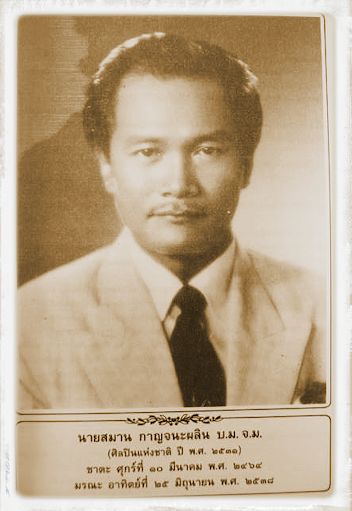
Abb.: Saman
Kanchanaphalin (สมาน กาญจนะผลิน)
[Fair use]
1995-07-01

Sir James David Wolfensohn (Australien, 1933 - ) wird Präsident der Weltbank.
Abb.: Sir James David Wolfensohn, 2003
[Bildquelle: IMF / Wikimedia. -- Public domain]
1995-07-02

Wahlen.
Abb.: Sitzverteilung nach der Wahl 1995
"General elections were held in Thailand on 2 July 1995. The result was a victory for the Democrat Party, which won 92 of the 391 seats. Voter turnout was 62.0%.[1] Results
Party Votes % Seats +/- Thai Nation Party (พรรคชาติไทย) 12,630,074 22.8 92 +15 Democrat Party (พรรคประชาธิปัตย์) 12,325,423 22.3 86 +7 New Aspiration Party (พรรคความหวังใหม่) 6,806,621 12.3 57 +6 National Development Party (พรรคชาติพัฒนา) 6,612,504 12.0 53 -7 Phalang Dharma Party (พรรคพลังธรรม) 4,209,135 7.6 23 -24 Leading Thai Party 3,474,142 6.3 18 New Thai Citizen Party 2,476,218 4.5 18 +15 Social Action Party (พรรคกิจสังคม) 2,201,218 4.0 22 0 Liberal Party 1,716,786 3.1 11 +3 Solidarity Party 1,361,719 2.5 8 0 Mass Party 1,309,381 2.4 3 -1 Safeguard Thai Party 195,835 0.4 0 New Invalid/blank votes 678,716 - - - Total 23,462,746 100 391 +31 Source: Nohlen et al [Quelle: http://en.wikipedia.org/wiki/Thai_general_election,_1995. -- Zugriff am 2011-11-04]
1995
Zur Wahl:
Abb.: Lage der Provinz Suphan Buri (สุพรรณบุรี)
Bildquelle: [Bildquelle: CIA. -- Public domain]
"Popular support for Banharn [Banharn Silpa-archa - บรรหาร ศิลปอาชา, 1932 - ] was even more firmly consolidated in the parliamentary election of 1995. As widely reported in the national media, this election was essentially a contest between Banharn's CT [Chart Thai] Party [พรรคชาติไทย] and the Democrat Party [พรรคประชาธิปัตย์] led by Chuan Leekpai [ชวน หลีกภัย, 1938 - ], a Thammasat-educated [มหาวิทยาลัยธรรมศาสตร์] and morally upright politician who enjoyed the support of most voters in Bangkok. Banharn was bent on winning this election, so he did not hesitate to recruit nationally well-known criminals, godfathers, and thugs into the CT Party, so long as they had proven their ability to deliver votes. Among those recruited were Kamnan Po [กำนันเป๊าะ, 1937 - ] (a murderous gangster in Chonburi [ชลบุรี] Province), Narong Wongwan [ณรงค์ วงศ์วรรณ, 2925 - ] (a suspected drug trafficker in northern Thailand), and Vatthana Asavaheme [วัฒนา อัศวเหม, 1936 - ] (another alleged drug dealer from Samut Prakan Province [สมุทรปราการ], south of Bangkok). The latter two had been denied entry into the United States on account of their suspected involvement in the narcotics trade. The response to this electoral strategy from middle-class residents of Bangkok was overwhelmingly negative—a poignant reminder to Banharn of how little political capital he had accumulated in Thailand's capital. Foreign investors, too, showed deep concern about the prospect of Banharn's ascendance to power. Most Suphanburians [สุพรรณบุรี], however, saw the 1995 election as a golden opportunity to have Banharn become Thailand's first Suphanburi-born prime minister. Because he was so viciously criticized in the media, these people stood firmly behind him. One farmer (#61) in Song Phi Nong District [สองพี่น้อง] recalled:- "We said to each other, 'We must stick together to help Banharn.' If he becomes prime minister, he will do even more to develop Suphan. If we miss this chance, we may have to wait for another hundred years ... If Chuan becomes prime minister, only the south will develop." Nodding in agreement, this farmer's neighbor (#91) said: "All Suphanburians voted for him. We had to, to say thanks to him for all the things he had done for Suphanburi ... If anybody didn't vote for him, that person was not a true Suphanburian."" [Quelle: Nishizaki, Yoshinori [訳吉武好孝, 西崎一郎]: Political authority and provincial identity in Thailand : the making of Banharn-buri. -- Ithaca, N.Y. : Cornell, 2011. -- 254 S. :Ill. ; 26 cm. -- (Studies on Southeast Asia ; 53). -- ISBN 978-0-8772-7753-8. -- S. 198]
1995-07-10

Die Militärregierung von Myanmar hebt den Hausarrest der Oppositionspolitikerin und Friedensnobelpreisträgerin Aung San Suu Kyi (အောင်ဆန်းစုကြည်, 1945 - ) auf.
Abb.: Aung San Suu Kyi (အောင်ဆန်းစုကြည်), Wandmalerei, England, 2011
[Bildquelle: Dom Pates. -- http://www.flickr.com/photos/globalismpictures/5843873456/. -- Zugriff am 2011-12-19]. -- Creative Commons Lizenz (Namensnennung)]
1995-07-11


Die USA anerkennen diplomatisch die Sozialistische Republik Vietnam (Cộng hòa Xã hội chủ nghĩa Việt Nam)
1995-07-13 - 1996-11-25
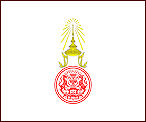
Banharn Silpa-archa (บรรหาร ศิลปอาชา, 1932 - ) ist Ministerpräsident (นายกรัฐมนตรีแห่งราชอาณาจักรไทย - Prime Minister)
Abb.: บรรหาร ศิลปอาชา - Banharn Silpa-archa
[Bildquelle: พีรพัฒน์ วิมลรังครัตน์ / Wikipedia. -- Creative Commons Lizenz (Namensnennung)]
"Banharn Silapa-Archa (auch Silpa-Archa,Thai: บรรหาร ศิลปอาชา, Aussprache: [banhǎːn sìlápàʔaːʨʰaː]; * 19. Dezember/19. August[1]/20. Juli[2] 1932 in Suphanburi) ist ein thailändischer Politiker und war zwischen 1995 und 1996 Premierminister von Thailand. Banharn war Sohn chinesischer Einwanderer und studierte ursprünglich am Bangkok Business College und arbeitete zunächst als Laufbote in Büros. Er ging 1974 für die Thai Volkspartei in die Politik als Mitglied der Stadtverordnetenversammlung von Suphanburi und baute ein Netzwerk lokaler Geschäftsleute auf. 1976 bereits wurde er stellvertretender Generalsekretär der Partei, Senator im Wuthisaphaund für die Provinz Suphanburi in das Repräsentantenhaus gewählt.
Seine politische Karriere war begleitet von Vorwürfen der Korruption und politischen Bearbeitung ("political fixer").
Regierungskarriere:
- 1986 Minister für Verkehr und Kommunikation
- 1988 Industrieminister
- 1990 Innenminister
- 1991 Finanzminister
- 1992 erneut Minister für Verkehr und Kommunikation
Im Mai 1994 wurde Banharn zum Parteichef der Thai Volkspartei (Chart Thai, Thai Nation Party oder Thai National Party) gewählt, nachdem der Nachfolger des abtrünnigen Chatichai Choonhavan zurückgetreten war. Während der Regierungszeit von Chuan Leekpai war er gleichzeitig Oppositionsführer.
Am 19. Mai 1995 ernannte man Banharn als Premierminister, nachdem die Thai Volkspartei einen erdrutschartigen Wahlsieg davongetragen hatte.
Während seiner Regierungszeit fanden zahlreiche hochrangige Veranstaltungen statt: neben den Begräbnisfeierlichkeiten zu Ehren der verstorbenen Königinmutter und dem Goldenen Jubiläum (dem 50. Jahrestag) der Thronbesteigung von König Bhumibol Adulyadej (Rama IX.) wurden auch ASEAN-Gipfel (1995) und die 18. Southeast Asian Games (SEA Games) in Chiang Mai abgehalten. Außenminister seiner Regierung war Kasem S. Kasemsri (* 1931).
Nachdem die allgemeine Zustimmung nicht mehr gegeben war, insbesondere aufgrund schwerer Korruptionsvorwürfe, trat Banharn am 27. September 1996 von seinem Posten zurück."
[Quelle: http://de.wikipedia.org/wiki/Banharn. -- Zugriff am 2011-10-06]
1995-07-13 - 1996-11-25
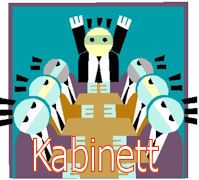
52. Kabinett: Banharn (บรรหาร)
1995-07-18

Tod von Ihrer Königlichen Hoheit Prinzessin Sri Nagarindra (ศรีนครินทรา, geb. 1900), Mutter der Könige Ananda Mahidol (Rama VIII.) und Bhumibol (Rama IX.).
Abb.: Denkmal für Prinzessin Sri Nagarindra (ศรีนครินทรา), Rai Mae Fah Luang (แม่ฟ้าหลวง), Chiang Rai (เชียงราย), 2007
[Bildquelle: Oatz / Wikipedia. -- Public domain]
Abb.: Wachsfigur von Prinzessin Sri Nagarindra (ศรีนครินทรา), Wat Srinagarindravararam (วัดศรีนทรวราราม), Gretzenbach, Schweiz, 2005
[Bildquelle: A. Payer. -- Creative Commons Lizenz (Namensnennung, share alike)]
Abb.: Lage von Gretzenbach (Schweiz)
[Bildquelle: OpenStreetMap. -- Creative Commons Lizenz (Namensnennung, share alike)]
"Srinagarindra (Thai: ศรีนครินทรา; RTGS: —Si Nakharinthra—, née Sangwan Talapat; 21 October 1900 – 18 July 1995) was a member of the Thai Royal Family and was a member of House of Mahidol, which is descended from Chakri Dynasty, originated by Prince Mahidol Adulyadej, the Prince of Songkla (สมเด็จพระมหิตลาธิเบศรอดุลยเดชวิกรม พระบรมราชชนก), son of King Chulalongkorn (Rama V). She was the mother of Princess Galyani Vadhana (กัลยาณิวัฒนา), the Princess of Naradhiwas, King Ananda Mahidol (Rama VIII, พระบาทสมเด็จพระปรเมนทรมหาอานันทมหิดลฯ พระอัฐมรามาธิบดินทร), and King Bhumibol Adulyadej (Rama IX, ภูมิพลอดุลยเดช). Her given name was Sangwan (Thai: สังวาลย์), while her formal name and title were Somdech Phra Srinagarindra Boromarajajonani (Thai: สมเด็จพระศรีนครินทราบรมราชชนนี). In Thailand, she was affectionately called Somdech Ya (Thai: สมเด็จย่า), "the Royal Grandmother". By the various hill tribe people, to whom she was a special patron, she was called Mae Fah Luang (Thai: แม่ฟ้าหลวง), "Royal Mother from the Sky", or "The Heavenly Royal Mother".
Early Life and BackgroundPrincess Srinagarindra was born on 21 October 1900, in Nonthaburi Province (นนทบุรี). Her given name was Sangwan Chukramol. She was the third child in a family of four children. Her elder brother and sister died while they were still young, and by the time she was 9 years old, she had also lost both her parents, and had only one remaining sibling, a younger brother named Thomya. Her aunt, Suay earned a living by making sweets and rolling cigarettes, became her guardian.
In those days, women had less opportunities in finding a job, many were housewives. Because of this, very few women could read. Sangwal's mother was one of those women, and she taught her daughter those skills. With these elementary skills, she enrolled at the all-girl school of Wat Anongkharam, the nearby temple whose abbot was recognized the need for girls to have an education. Her next school was Suksanari, but she had to leave after only a month due to lack of funds.
She maintained her reading habits by regularly visiting her aunt’s friend, who ran a library of books for rent. She read up on Thai classics, such as, Inao, Phra Abhaimani, and Sangsinchai.
At the suggestion of a relative, the young Sangwal was sent to live with Chan Saeng-xuto, another relative and a nanny to Princess Valaya Alongkorn, the Princess of Petchaburi (สมเด็จพระราชปิตุจฉา เจ้าฟ้าวไลยอลงกรณ์ กรมหลวงเพชรบุรีราชสิรินธร), daughter of King Chulalongkorn (Rama V) and Queen Savang Vadhana (สมเด็จพระศรีสวรินทิราบรมราชเทวี, later Queen Sri Savarindira, the Queen Grandmother). At the age of 7, that the young Sangwal found herself presented to the royal court in the manner deemed proper for young Thai girls with the right connections and opportunities. Her only duty at that time was to present herself at a twice-daily audience with the Princess – when she woke up and again in the evening. Every now and then she would join the Princess’ entourage when she went for an audience with her mother, Queen Savang Vadhana at Suan Hongsa Royal Villa, in the grounds of Dusit Palace.
Shortly afterwards, she was sent to Satri Wittaya School, while she lived with Huan Hongsakul, the nanny of Prince Mahidol Adulyadej, the Prince of Songkla, the younger brother of Princess Valaya Alongkorn.
After an accident with a sewing needle, Sangwal was sent to Lord (Phraya) Damrong Baedyakhun, the court physician for surgery. She stayed at his house, while continuing her schooling at Satri Wittaya School. Sensing that she was feeling listless and unhappy, the good doctor enquired whether she would be interested in studying nursing, and she answered at once that indeed she would be. With her options being limited and after 6 years of school, she as a young girl had no other choice for further education but to become a teacher. Siriraj Hospital had opened a school of midwifery and nursing, but despite the minimum requirement of being able to read and write, had not been able to attract many students. To add further incentive, each student was paid 15 baht per month, sufficient to live on for the entire month.
Nursing Student
Abb.: 1912
[Bildquelle: Wikipedia. -- Public domain]Sangwal enrolled as a student of Siriraj School for Midwifery and Nursing in 1913, when she was just thirteen. She was two years under the minimum age requirement, but her qualifications more than made up for her age and the school was able to overlook this discrepancy. She was a scholarship student, and on accepting the fifteen baht monthly for her expenses, she had agreed to work for the hospital for three years, the same number of years she would spend at the nursing school. Upon graduation in 1916, she joined the nursing team at the hospital.
In the following year, Prince Rangsit Prayursakdi, the Prince of Chainat (สมเด็จพระเจ้าบรมวงศ์เธอ พระองค์เจ้ารังสิตประยูรศักดิ์ กรมพระยาชัยนาทนเรนทร), son of King Chulalongkorn and adopted son of Queen Savang Vadhana, stepbrother of Princess Valaya Alongkorn and Prince Mahidol Adulyadej), director of the Royal Medical College of Siriraj Hospital, designated two doctors and two nurses to further their studies in the United States. These scholarship students were expected to return to teach future generations of medical students and advance the medical profession in Thailand. The medical scholarships were provided by Prince Mahidol Adulyadej and a first-year student at Harvard Medical School, while the nursing scholarships were provided by his mother, Queen Savang Vadhana. One of the two nurses selected was Sangwal herself. Her preparations for this trip included a six-month intensive English couse with Miss Edna Sarah Cole, headmistress of Kullasatri Wang Lang School for girls (later to become Wattana Wittaya Academy).
For her passport, she also needed a surname, the use of which was not a regular practice in Thailand until 1913, during the reign of King Vajiravudh (Rama VI). Since her father was dead, she took on the surname of Lee Talabhat, who was in the service of Prince Mahidol Adulyadej. Her surviving younger brother registered himself as Thomya Chukramol.
Sangwal Talabhat left Bangkok on the 13th of August, 1917 on the ship Kuala with almost twenty other Thai students. The trip took them to Singapore, Hong Kong, Japan, Hawaii, and after six weeks, the group reached San Francisco. From there, she went to live with an American family, the Adamsens of Berkeley, for a year, attending Emerson School with her friend Ubol Palakawongse na Ayudhya, a member of the nobility. She also attended Sunday school to learn the ways of the Christian faith.
In 1918, they joined eight other Thai students travelling to Boston, Massachusetts. As the train drew into Boston station on the 21st of September, 1918, Prince Mahidol was waiting to welcome them, though Sangwal had no idea who he was. Furthermore, she had no idea that her presence had already made an impact on the young prince, who, according to his roommate, Pradit Sukhum (later Lord (Luang) Sukhum Nayapradit), arrived home after two o'clock in the morning, shook him awake saying:
“ “The two girls have arrived. Sangwal is really very pretty, you know.” ” Prince Mahidol Adulyadej had arranged for the girls to stay with the Armstrong family in Hartford, Connecticut, and to attend North Western Grammar School to perfect their English reading, writing, and speaking skills. During this time, Prince Mahidol maintained close interest in Sangwal’s development, making frequent visits to Hartford. Their strolls in the park to observe the flowers reflected Sangwal’s lifelong love of plants and concern for the natural environment.
Engagement and Marriage
Abb.: Hochzeitsfoto
[Bildquelle: Wikipedia. -- Public domain]Approval was granted, and in 1919, in a private ceremony, Prince Mahidol Adulyadej, the Prince of Songkla Nagarindra presented Sangwal Talabhat with a diamond ring on a heart-shaped setting. (30 years later, this same ring was to be presented by his son, King Bhumibol Adulyadej, to his bride, Mom Rajawongse Sirikit Kitiyakara). After their engagement, Prince Mahidol bade his fiancée move to Cambridge where she lived with the Williston sisters, Emily and Constance, who tutored her in algebra, Latin, French, and English. The Prince also assigned an American lady to take her on guided tours of museums and art galleries, with explanations on the significance of the various exhibits.
Prince Mahidol Adulyadej and Mom Sangwal Mahidol na Ayudhya had 3 children; 1 daughter and 2 sons:
Princess Galyani Vadhana, the Princess of Naradhiwas Rajanagarindra, (born 6 May 1923, died 2 January 2008), married Aram Rattanakul Serireungriddhi (then divorced) had 1 daughter, and then married Prince Varananda Dhavaj Chudadhuj (วรานนท์ธวัช จุฑาธุช), had no children.
- King Ananda Mahidol (Rama VIII), (born 20 September 1925, died 9 June 1946), unmarried
- King Bhumibol Adulyadej (Rama IX), (born 5 December 1927), married Mom Rajawongse Sirikit Kitiyakara, has 4 children.
The marriage was followed by an extensive visit to various European countries, before the couple eventually returned to the United States. Prince Mahidol resumed his studies in public health at Harvard and at the Massachusetts Institute of Technology (MIT) in Boston and arranged for his wife to take a preparatory course for nursing at Simmons College in the same town, where she studied chemistry and nutrition. Upon passing the test at the end of the semester, she went on to study school health at MIT, entering in the summer semester.
In Boston, they were simply known as Mr. and Mrs. Mahidol Songkla, living in a two-bedroom flat at 329 Longwood Avenue. Apart from their studies, they were both closely involved in the activities of the Siam Association of USA under Royal Patronage, which had been established by the prince. They would often host meals for other Thai students – she did the cooking and he washed the dishes.
Death of Prince MahidolPrince Mahidol Adulyadej was beset with kidney problems during his last year at medical school. Despite chronic health problems, he managed to graduate with honours. Immediately after his finals, he suffered from acute appendicitis requiring immediate surgery. As soon as he was well enough to travel, he and his family went to Europe again for an extended stopover, returning eventually to Siam in 1928 and taking up residency at Srapathum Palace. Prince Mahidol died on 24 September 1929 at Sapathum Palace.
After Mahidol's deathShe was 29 years old then and cared for her 3 young children ranging in age from six and four to one year and nine months. At that time, her daughter, Princess Galyani Vadhana was studying at Rajini School. As soon as they were old enough, her sons were also sent to school, Prince Ananda Mahidol attended kindergarten at Mater Dei School and transferred to Debsirin School, while Prince Bhumibol Adulyadej remained in kindergarten at Mater Dei School.
All through their lives they had been moving from place to place. Upon their return to Thailand on 24 June 1932, a revolution brought about the end of absolute monarchy in the country and introduced democracy. The situation was tense which made members of the Royal Family resign from their government posts, whereas many left the country to live overseas until the political scene had settled.
Moved back to EuropeQueen Sri Savarindira (ศรีสวรินทิรา), the Queen Aunt, who later titled the Queen Grandmother, consulted with her daughter, Princess Valaya Alongkorn, the Princess of Petchaburi and her adopt son, Prince Rangsit Prayursakdi, the Prince of Chainat (มเด็จพระเจ้าบรมวงศ์เธอ พระองค์เจ้ารังสิตประยูรศักดิ์ กรมพระยาชัยนาทนเรนทร), about the suitable course of action for her grandchildren, especially Prince Ananda Mahidol. Prince Rangsit recommended Lausanne, Switzerland, a decision that Mom Sangwal approved to because of the in her opinion mild climate, beautiful scenery and hospitable people. It was also said to be one of the most favoured places of her much-travelled husband Prince Mahidol.
And so, in April 1933, Mom Sangwal and her children took off for Switzerland, together with a small entourage among whom was a young relative name Boonruen Sopoj (บุญเรือน โสพจน์), who later became Dame (Thanpuying) Boonruen Choonhavan (บุญเรือน ชุณหะวัณ), the widow of the late Prime Minister General Chatichai Choonhavan (ชาติชาย ชุณหะวัณ).
Accession to the throneWhile Mom Sangwal and her 3 children were living in Switzerland, King Prajadhipok (Rama VII)) abdicated on 2 March 1934, relinquishing his right to appoint an heir to the throne, a year after they arrived in Switzerland,
According to the Palace Law regarding succession to the throne as promulgated by King Vajiravudh in 1924, the next line was the son of Prince Mahidol Adulyadej, the Prince of Songkla Nagarindra. Thus His Highness Prince Ananda Mahidol, as yet only 9 years old, was declared the 8th monarch of the Chakri Dynasty.
Since the new king was only 9 years old, Parliament unanimously appointed Prince Aditya Dibabha Abhakara (พระเจ้าวรวงศ์เธอ พระองค์เจ้าอาทิตย์ทิพอาภา, son of Prince Abhakara Kiartiwongse, the Prince of Chumphorn - พระเจ้าบรมวงศ์เธอ พระองค์เจ้าอาภากรเกียรติวงศ์ กรมหลวงชุมพรเขตอุดมศักดิ์) and Lord (Chao Phraya) Yomaraj (Pan Sukhum) as Regents until the king came to age. On this same occasion, Mom Sangwal was conferred the title of The Princess Mother Sri Sangwal, a title that still denoted her commoner status.
For various reasons including security in line with their new status, the family moved from their former home to a new house, names Villa Vadhana in Pully, near Lausanne.
The king and his younger brother, Prince Bhumibol Adulyadej went to a school called Ecole Nouvélle de la Suisse Romande. Although in his own country he was king, at school in Switzerland he was simple Ananda Mahidol, son of Madame S. Mahidol, a student receiving no more privileges than any other student here.
Return to Thailand3 years later ascending the throne, the young King Ananda Mahidol returned to visit his country and his people for the first time. Upon their return, Princess Sri Sangwal was elevated to the ranks of royalty with the title Her Royal Highness. Throughout the 2 months that the young king appeared in the midst of his people, the Thais had a chance to admire his maturity and his demeanor, which was most becoming to a monarch and far beyond his years. For this, they could only credit the Princess Mother; she had moulded a monarch worthy of obeisance and respect single-handed.
The Princess Mother also took advantage of this brief sojourn in their homeland to make sure that the king saw as much as he could of the important temples and historic sites in Bangkok and the environs, and of the national arts and culture. She also kindled his desire to help others, to contribute to charitable projects including public health and medicine. The king donated a sum from his Privy Purse to build the Ananda Mahidol Hospital in Lopburi Province (ลพบุรี), while his siblings donated toward a health centre in Samut Sakhon Province (สมุทรสาคร).
In January 1939, King Ananda Mahidol and his family bade farewell once again to their homeland and returned to Switzerland.
World War IIThe outbreak of World War II in 1939 has its repercussions on Mahidol Family just as on anyone else, and the Princess Mother’s resourcefulness helped the family through the crisis. They received ration coupons like other Swiss families; they had to use ash for washing instead of soap, and the young king travelled to school by bicycle. The Princess Mother made her own jam from fruit such as strawberries, apples and pears that she picked from her own garden.
But even during such trying times, she kept up her late husband’s tradition of inviting Thai students round for meals on Saturdays. The increasing number of Thai students in Switzerland, who had moved there from war-torn Belgium, France, and Italy, meant that they had to take turns as guests of the Princess Mother. Her support to the students extended to lending, or even giving, them money if their funds from Thailand arrived late, though she always managed to keep the family going even when her own funds were delayed as well.
The young king and his brother remained at Ecole Nouvélle de la Suisse Romande until 1941, boarding at the school during their last 2 years there, since it was their mother’s wish for them to learn how to take care of themselves. Meanwhile, Princess Galyani Vadhana was attending an international school in Geneva.
The Princess Mother also made a point of hiring an English governess to teach English to the king. She also made sure her children kept up with their Thai language and culture studies with a tutor, Prueng Siribhatra, who was sent by the Thai Government. The family lived in Switzerland until all children graduated. They prepared for their official return to Thailand.
Official return to ThailandOn 29 November 1945, the family started returning to Thailand, this time travelling by plane. 6 days later, they arrived in Thailand. As they stepped off the plane, that Thai public witnessed, not two young schoolboys dressed in shorts as they had the previous time, but two mature and dignified young men, happy to be back among their own, yet, understandably apprehensive about the responsibilities and expectations that lay ahead.
Princess Mother Sri Sangwal, on the other hand, seemed more at ease than ever before. At the age of 45, she had successfully directed the paths of her children until they were all intelligent and responsible adults, commanding the awe, admiration and respect of the Thai people. King Ananda Mahidol especially was ready to take on the huge burden placed upon his shoulders. Everywhere the king went, his mother and younger brother would be close by. Having grown up in a faraway land, there was much for them to see and learn about their country and their culture, and the Princess Mother made sure that all their questions were answered.
Death of King Ananda Mahidol and Accession of Prince Bhumibol AdulyadejThe Thai Government requested that the king postpone his return to Switzerland in order to present the new Constitution to the nation on 9 May 1946, and to open Parliament on 1 June. He acquiesced, and the return trip to Switzerland was scheduled for 13 June 1946. But the trip was not to be, for an unforeseen calamity befell the nation. On the morning of 9 June 1946, only 4 days before he was due to travel to Switzerland, His Majesty King Ananda Mahidol (Rama VIII) of Thailand died in an incident of either regicide or suicide at Boromphiman Throne Hall, Grand Palace, Bangkok. Though Siamese police director general originally told an emergency session of the legislature that the King's death was accidental, experts have since testified that regicide is the most likely due to King Ananda Mahidol being found flat on his back with his colt found a small distance from his body but nearer his non dominant hand. In February 1955, three of the late King's attendants: his secretary Senator Chaleo Patoomros and two pages, Nai Chit and Butr Paramasrin, were executed by Phibun's regime on charges of conspiracy to kill the King after long and confusing trial. Today it is acknowledged that these charges were probably baseless, but the truth of the matter remains a mystery that is not discussed within Thailand.
On the same day as King Ananda Mahidol's death, by Parliament’s unanimous decision, Prince Bhumibol Adulyadej, her second son was invited to accede to the throne as King Bhumibol Adulyadej (Rama IX) of Thailand, the ninth monarch of the Chakri Dynasty
Return to SwitzerlandOn 19 August 1946, the Princess Mother accompanied the new king back to Switzerland, where he resumed his studies at the University of Lausanne. He switched his choice of subjects from science to political science, law and economics, in order to better suit his new priorities.
During that time, the Princess Mother once more dedicated herself to her role of “housekeeper” of the Villa Vadhana residence, seeing to it that everything ran smoothly. She preferred to do things by herself, even driving on shopping rounds. After lunch, she would spend her time in the garden, digging the flower beds, pruning the bushes and sweeping the leaves. She would also attend lectures on topics of interest at the University of Lausanne. On days off from college, the king and his mother would go on drives out of Lausanne or to neighbouring countries such as Italy, France, and Liechtenstein, visiting various places of interest or just enjoying the peace and quiet of the countryside. On these trips, the Princess Mother would often stop by the road and pick wild flowers to take back home.
On 4 October 1948, King Bhumibol Adulyadej was badly hurt in a motoring accident, requiring hospitalization. The Princess Mother committed herself to nursing her son back to health. Fear and anxiety for her son, together with the physical strain, must have taken their toll, and doctors eventually advised her to take a break in the country.
Not long afterwards, on 12 August 1949, the Thai people received joyful news that the King had become engaged to Mom Rajawongse Sirikit Kitiyakara, the eldest daughter of His Serene Highness Prince (Mom Chao) Nakkhatra Mangkala Kitiyakara (later became His Highness the Prince of Chuntaburi II Suranath), the Thai ambassador of the Court of St. James's, England, and Mom Luang Bua Sanidvongse.
Serving the KingdomThroughout her long life, The Princess Mother served her country, providing her full support to her sons, the late King Ananda Mahidol and King Bhumibol Adulyadej, and to her daughter Princess Galyani Vadhana, while carving out her own role in activities of social concern.
When King Bhumibol Adulyadej returned to Thailand from his studies in Switzerland in 1951 with his wife, Queen Sirikit, and their first daughter, Princess Ubolratana Rajakanya, the Princess Mother remained in Lausanne. She returned only periodically between 1952 to 1963 in order to attend significant functions or events, such as the birth of her grandchildren, the illness and subsequent death of Queen Sri Savarindira, the Queen Grandmother, or the ordination of her son, the King. For these visits, she would stay only one or two months at a time, and only stayed for extended periods when the occasion demanded. On Their Majesties’ state visit to 14 European countries and the United States in 1960, she remained in Thailand for 6 months, acting as Regent during Their Majesties’ absence, just as she did during their subsequent state visits overseas until 1967.
RegencyAs Regent, the Princess Mother carried out various official duties on behalf of the King, including accepting diplomatic credentials from newly posted ambassadors, conferring degrees on university graduates, presiding at religious ceremonies and putting her signature to several important legislative acts. She was the third woman Regent of the Rattanakosin era, the first being Queen Saovabha Bongsri during the reign of King Chulalongkorn (later became Queen Sri Bajrindra, the Queen Mother), and Queen Sirikit early on in the present reign. In the capacity, she put her signature to a number of important laws and declarations, including the Suppression of Prostitution Act of 1960, and the first National Economic Development Plan, 1961–1966.
A trip to northern Thailand in 1964 helped change her routine. Not long after the Bhubing Palace on the northern town of Chiang Mai Province was completed, the King invited the Princess Mother for a visit. As was her habit in Switzerland, the Princess Mother went for long treks through the woods behind the palace, enjoying the flora and fauna, and stopping in the little villages en route. It was then that she discovered the abject poverty of the villages in remote areas. There was a sad luck of schools and health services or personnel, and even the border patrol police, who acted as guides and also provided security for her on the trips, were very poorly paid, and receive no per diem for services rendered over and above their normal duties.
Due to those observations revealing the precarious economical situation of the rural areas, the Princess Mother began making regular visits to the remotest areas of the kingdom, starting from 1964, despite her age of 64 years. In border areas, she would make it a point to visit each patrol station to lend moral support to the soldiers.
This was also the start of a number of projects to alleviate the problems of poor villages and improve their quality of life. Ranging from education and health care, to environmental preservation, the social welfare projects have over the decades proved to be a unifying force for those in remote areas and have helped upgrade their lives.
Social Welfare ProjectsEver since she was still a young mother caring for her 3 children in the confines of the new villa in Srapathum Palace, the Princess Mother proved that Thai housewives could make good use of their time and contribute to society. In 1932, when her children had started school and she had more time on her hands, she set up an American-style “Sewing-circle”, inviting close acquaintances to join the group. Among the members of the circle were Mom Chao Sipphanphansanur Sohnakul, Thanpuying Prayong Sanidvongs na Ayudhya, Khunying Chalaem Puranasiri, Khunying Srivisarnvaja, Khunying Prem, Damrongbaedyakhun, Thanpuying Poa Anurakshraja mondira, and expatriate wives such as Mrs. Zimmerman, Mrs. Davis, Mrs. Langesen, Mrs. Nederguard, Mrs. Pendleton and Mrs. Reeve, whose husbands were missionaries or lecturer at Chulalongkorn University (จุฬาลงกรณ์มหาวิทยาลัย).
The sewing circle members started off by making their own clothes, then gradually made clothes for poor children at various hospitals. They met once a week, each member taking turns hosting tea at home between 4 and 6 pm.
It soon became a procedure for the Princess Mother to set aside her own money to purchase necessary items for poor villages during her increasingly frequent upcountry visits. These gifts included T-shirts, towels, multipurpose “pha khao ma” cloth, and stationary for schoolteachers, school uniforms, and stationery for schoolchildren, and pha khao ma, sarongs, needles and thread, medicine, tinned food and dried foodstuff for villagers, while small children would receive various toys suitable for their age.
She also set up with her own personal funds a number of foundations, most notably the Border Patrol Police Support Foundation, and the New Life Foundation for those who have recovered from leprosy or mental illness.
Apart from her own personal funds, the money for these various projects came from the sale of handicraft made through projects initiated by the Princess Mother, such as pressed-flower greeting cards, which was her hobby, and brooms and brushes made from the sisal hemp, which became a very popular product.
In 1985, the Cabinet approved the proposal of the National Committee for the Promotion and Development of Social Welfare Activities that 21 October, the Princess Mother’s birthday, be declared National Social Welfare Day, in honour of the Princess Mother, who devoted her time and efforts, in addition to her own funds, to well-being of the people. As she was also a nurse, it has since been renamed National Nurses' Day (TH: วันพยาบาลแห่งชาติ Wan Phayaban Haeng Chat).
EducationFor the Princess Mother, education had always been a goal in life. This love for education also fulled her desire to encourage, not only her own children, but the people she came in contact with, to further their studies to the best of their abilities. To this end, she continuously provided support when and where she could, most significantly in remote areas which the network of the central government could not reach.
Being a scholarship student herself, the Princess Mother was known to have provided scholarships as far back as 1920, not long after her marriage to Prince Mahidol Adulyadej. The Bangkok Times issue of 21 September 1920 listed the names of donors to the Kullasatri Wang Lang School, which included the newly-weds, who had donated 5,000 baht. The publication noted that Mom Sangwal Mahidol na Ayudhya, having married into the Royal Family, was entitled to an annual stipend of 200 baht, and that she had decided to donate it in its entirely to needy students.
Her students as a scholarship student had been under the direction of Prince Mahidol. Her studies included algebra, English, Latin and French, in addition to her courses in nursing and public health. She also received tutorials in psychology, cooking and nutrition.
Through the influence of her royal husband, she had always considered it her responsibility to return to Thailand to help the nation. This sense of responsibility was also instilled in the hearts of her three children from the time they were small. According to Princess Galyani Vadhana:
“ “It was almost an unspoken rule, a nature sense of priority to do what we could for the country. What mother taught us came from Father. He was 8 years older than Mother, and taught her a lot. Mother was very receptive, she learned so much from Father. What she taught us I later found to be almost quoted verbatim from Father…It was like Father teaching us through Mother…” ”
Although her children were brought up in a western environment, the Princess Mother always made sure that they retained their contacts with their language and culture. She commissioned a jigsaw puzzle in the shape of a map of Thailand as an educational toy for her children. History and geography quizzes were a standard family game at mealtimes, and if the children did not know the answer to a question, they had to look up in a dictionary or encyclopedia.This kind of environment created by the Princess Mother was greatly conductive to inquisitive minds like those of the three royal children, encouraging them to strive for the best in whatever happened to interest them. When the two young princes became interested in World War I battleships, they would each study the subjects matter in depth, the elder prince researching German battelships while his younger brother read up on English and American vessels.
One of the Princess Mother’s initiatives with regard to education was the Border Patrol Police School project. As a result of her frequent trips to the remote corners of the kingdom, the Princess Mother learned of the extreme poverty of the villagers, especially those belonging to the hill tribes. One school had been set up by the Border Patrol Police Region 5 in their Dararasmi Camp, in Mae Rim District Chiang Mai Province. The school provided access to education for children in these remote regions, giving hilltribe children a chance to learn the Thai language and culture and instilling in them a sense of being Thai.
The concept was in line with the Princess Mother’s own philosophy that education was the key to improving human resources, a necessary development tool. She therefore took the school under her royal patronage in 1964, and donated funds to the Border Patrol Police to set up similar school in remote areas. The private sector found this to be a worthy cause, and contributed its share in setting up more schools, which were named after their donors.
Each school – and there were eventually to be 185 – had power classrooms and a proper residence for teachers for added convenience and incentive. She personally went to open each of these schools, donating to them a set of symbolic items to bolster a sense of Thai identity, including a Buddha image to symbolize religion, a portrait of the King or the Queen as an emblem of the monarchy, and a flag to represent the nation. She also made sure that each school was equipped with a radio set to keep up with the news, and a map of Thailand to give students a sense of belonging no matter where in the country they were located.
Public HealthTo the princess mother, the health and well-being of her people were highest on the list of priorities. She believed that, with good health, they would be in the position to earn an income and help develop the country – a philosophy that echoed that of her royal husband, Prince Mahidol Adulyadej, who had pledged his mental, physical and financial support to the field of public health of the country.
Upon the death of Prince Mahidol, the Princess Mother continued to provide scholarships to medical students so their studies would not be interrupted. When they returned to work, she also supplemented their salary if it happened to be lower than the set rate. A revolving fund of 500,000 baht was provided to Chulalongkorn University for 25 years, from which the interest could be used to send students for post-graduate studies overseas. After 25 years, the fund was transferred to the Faculty of Medicine, Siriraj Hospital.
In 1945, as she accompanied her elder son, King Ananda Mahidol, back to Thailand, she brought back with her drug PAS which was used to treat tuberculosis.
In addition to providing scholarships, the Princess Mother continued to play a major role in the field of nursing in Thailand. She founded the Thailand Nursing Association, of which she was also a board member. With her funds, the first national nursing convention in Thailand was organized in 1960. Hospital building and nursing schools were built under her patronage
The Princess Mother’s Volunteer DoctorsSince 1964, when trips to remote areas to visit villagers and army personnel became a routine procedure, she was concerned how people there were plagued by health problems, Due to the lack of medical facilities, such basic illness as gastro-intestinal infections, tape worms, skin diseases and malaria would often lead to death.
In 1969, she established the first medical volunteer mobile unit in Chiang Mai Province, called The Princess Mother’s Medical Volunteer. The team was made up of doctors, dentists, pharmacists, nurses and health officers, who volunteered their time during weekends to travel by car or helicopter to treat the ill, and offer consultative services to the public free of charge.
All expenses for these visits were subsidized by the Princess Mother. If she happened to be on the trip with the medical team, she would help fill the prescriptions and provide advice to the sick. Those in critical condition would be sent to local hospitals. Later, she experimented with the system of radio consultation between doctors in the hospital and patients at health centres in remote areas, following the system of the Royal Flying Doctor Service of Australia.
The project was well received, and within a few years the number of radio centres increased to 446 covering 25 provinces, with the centre of operations at Srapathum Palace. Over a million patients have benefited from this service.
In 1974, the Princess Mother donated one million baht to establish The Princess Mother’s Volunteer Flying Doctor Foundation, which was subsequently changed into The Princess Mother’s Volunteer Foundation; PMMV in 1985. Through the years, the foundation was to remain close to her heart, much like a mother who brings up a baby into a fully grown adult but still continues to keep a watchful eye on him in his maturity.
The Prostheses Foundation and the Breast Foundation which both under the Patronage of the Princess Mother, were two projects that the Princess Mother initiated in her later years. The Prostheses Foundation was set up in 1992, when she learned that a doctor from Chiang Mai University had developed below knee prostheses from recycled plastic bottles which cost only 700 baht, and ones that could be used for agricultural purposes at a mere 300 baht. She saw this as an opportunity to provide artificial limbs free of charge to the poor to enable them to carry out a normal life. With initial funds donated by the Princess Mother, and further donations from her daughter, Princess Galyani Vadhana, and the general public, the foundation is now able to offer here artificial limbs to the needy regardless of nationality or religion. It also trains personnel, and carries out research to improve the quality of the protheses.
Environmental PreservationShe had deep interests in issues of nature. In winter she enjoyed skiing down the snowy slopes, while in summer she would spend hours trekking along the hillsides, picking wild flowers for decoration or for making into pressed flowers.
In 1964, at the age of 64, she hiked to the top of Doi Inthanon (ดอยอินทนนท์), Thailand’s highest peak locates in Chiang Mai Province. She had been used to taking walks from Bhubing Palace, accompanied by border control police and two physicians. Soon she left that she had covered all she could within the immediate vicinity, and yearned to conquer Doi Inthanon, which was visible from the palace windows. In those days there was no access road to the top, and the Princess Mother spent two nights camping out during her hike, the first night before the ascent at Pang Somdet, and the following night at Ban Pha Mon. Here a large number of hilltribe villagers turned up to welcome her. Again, their lack of access to medical care gave her cause for concern. When she returned the following year, she brought with her two doctors, and her visits to these remote areas by helicopter eventually earned her the name Mae Fah Luang among the hill tribes, meaning Royal Mother from the sky, referring to her descent from the skies with doctors, nurses, medical equipment, food and clothing for them.
The mulitple visits of the hill tribes her realize that their slash-and-burn system of cultivation had inadvertently caused the destruction of the watershed forests. Over the years, they had moved from place to place, leaving behind them patches of barren hillside.
She initiated the Doi Tung Development Project. I shall plant forests on Doi Tung, she pledged. In 1988, a total of 93,515 rai (14,962 ha.) in Mae Chan, Mae Sai, and Mae Fah Luang District of Chiang Rai Province were targeted for reforestation and sustainable development to improve the quality of life of the local villagers.
The Princess Mother played an active role in the Doi Tung Development Project, starting from nursing the saplings herself, planting the forests with support from government and the private sector. Surrounding the palace are also experimental plots where temperate crops are tested, such as Arabica coffee beans from Brazil and Costa Rica, macadamia nuts and chestnuts. New plant-nursery technology is constantly being introduced for the promulgation of asparagus, bananas, orchids and strawberries. After successful trials, villagers are trained in the procedures to follow, and these extra activities are expected to provide them with an increased income.
A Drug Rehabilitation Centre was also set up so addicts could be treated and provided with vocational training to suit their way of life. Mulberry trees, the fibre of which is used to make sa paper, is just one of the crops they are encouraged to plant and grow.
A Mother First and ForemostWhile her children were growing up as members of the Royal Family in the days of absolute monarchy, it would have been so easy for the Princess Mother to bring them up to life of privilege, surrounded by attentive staff eager to follow orders. But that was not the way of Prince Mahidol or his wife.
Princess Galyani Vadhana described her upbringing as being very much in the vein of any normal family, where the children are taught to be respectful of grown-ups, to be responsible in their duties, and to expect punishment when they are naughty. Corporal punishment was applicable as the last resort. First-time mistake would be discussed, and explanations given; however, if the children still persisted despite reasons and warnings, then punishment would be meted out. Often the Princess Mother would even discuss with the offender what level of punishment they thought deserved. Then they would grimly face the consequences.
Princess Galyani Vadhana recounted a particular episode in Lausanne when Prince Ananda Mahidol, despite frequent warnings persisted in picking on a youngster who was the son of the caretaker. On this particular occasion, Prince Ananda Mahidol pushed the boy near some stairs, which could have led to a disastrous outcome.
The exasperated mother said to her son;
“ “I’ve warned you many times, this time I’m going to spank you. How many times do you think you should be spanked?” Whereupon the young boy answered, “Once. I don’t think that’s enough,” continued Mother, “since you’ve done it several times now. I think it should be three times.” ”
And with that, the punishment was carried out. Prince Ananda never picked on the little boy again.The children had been taught from a young age to be thrifty. They each received weekly pocket money, the amount depending on their age, but never more than was necessary to buy themselves some sweets or chocolates. Other items, such as books and toys, also had to come out of their own pocket money; the Princess Mother only indulged them on special occasions like birthdays.
A sense of frugality was something that the Princess Mother practiced throughout her life. Even when she was in a position to pamper herself a little, she preferred to maintain her simple was of life. Her meals were simple dishes that emphasized nutritional value. She only had new clothes made when necessary, usually two outfits a year. She wore very little jewelry. A simple bracelet made of nine gemstones was the extent of her accessories; she said it went with any outfit. She also wore one particular ring – a diamond ring with her Thai initials “Sor Vor” (th: ส.ว.) etched on top. The initials stood for “Savang Vadhana” (th: สว่างวัฒนา), the given name of Queen Sri Savarindira who had given her the ring.
Manners were an integral part of character-moulding. The children had always been taught to respect their elders and behave properly with other people, and this remained the same despite the change in their status later in life. Along with manners came spirituality and religion. Though she learned about Christianity during her years in the United States, she remained a devout Buddhist, and brought her children up in the Buddhist faith as well. However, she was clever enough to introduce western religious rites such as bedtime prayers into their daily routine to make Buddhism more accessible to them. Instead of the usual Sanskrit incantations, they said their prayers in Thai, asking the Lord Buddha to protect them and lead them down the good and righteous path. Prayers would them be supplemented by stories on the life of the Buddha.
To encourage them to be aware of their responsibilities, the children were expected to do their chores like any other children. They had to keep their rooms clean and even the young king had to make his own bed when he was in Lausanne. This habit remained in later years. When King Bhumibol Adulyadej was living overseas, he would drive, wash and even polish his own car without anyone’s assistance. Similarly, after his music sessions, he would insist on putting away his own musical instruments and wiping them himself.
Her way of bringing up the children held her in great respect from Queen Sri Savarindira, who had nothing but praise for her daughter-in-law. As Princess Galyani Vadhana noted;
Stargazer
“ “Queen Sri Savarindira did not get involved in the everyday routine of bringing up the children, but only gave advice on important matters. That was because she respected Mother, seeing that she brought up her children with proper discipline and in the right way. Queen Sri Savarindira did not feel the need to interfere because Mother was doing such a good job already.”[4] ” According to Princess Galyani Vadhana, the Princess of Naradhiwas Rajanagarindra’s book Busy Fingers, the Princess Mother had always shown an interest in astronomy;
“ “When she was in the States she had a copy of Astronomy for Beginners. Later on when her youngest son started astronomy lessons at his Lausanne school, Mother bought him a copy of “Le Ciel” (The Sky), Larousse edition. In this book there were some maps of stars and the Moon which she looked up so often that three pages fell out. These Mother took out eventually for separate use.”[5] ”
On boat trips, the Princess Mother was known to have enjoyed standing on deck at night, gazing at the stars without the use of a telescope. When the navy officials had explained the names of the constellations to her in Thai and English, she would give their French and Latin names, then proceed to astonish the officials with her knowledge of further constellations, until quite late into the night.Her interest in astronomy remained a lifelong passion and was reflected in several of her other activities. The constellations appeared as part of her ceramics painting, on lamps, ashtrays and dishes, often in the form of flowers representing the stars, with the number of petals and the colours representing the magnitude of each star.
Her love of astronomy was evident in her Doi Tung Royal Villa. The ceiling of the main reception hall is decorated with the constellations as designed by the Bangkok Planetarium. I want a ceiling for the hall that is inexpensive, she instructed, opting for a carving of the solar system and the 12 signs of the zodiac, and 12 constellations rather than a crystal chandelier. Each star was represented by a light bulb giving off a comparative magnitude of light. Wood carvings of other constellations also adorned her private balcony and some of doors.
Flower for the PrincessThe Princess Mother had a passion for flowers. It was a defining characteristic that dominated her life from her youth through to her later years. This love of flowers reflected a sensitivity and a concern for nature that was not just enjoyment of its aesthetic qualities, but included the need to care and nurture them into full bloom with the same kind of attention and concern that she gave to her role as mother, and every other project in her lifetime.
“ Plants are like people. This particular zinnia I didn’t grow from a seed, but bought a sapling from a nursery, and it is now strong and healthy. Why is that? Because the nursery owner knew how to choose a good seed, and the right soil. He knew how to nurse the sapling, which I couldn’t have done as he did. When I bought it back, I had to attend to it, fertilize it constantly because the soil here is not so fertile. I have to constantly water the plant, turn the soil, pull the weeds and pick the dead leaves. People are like that; if he comes from a good breed, the child will be healthy and intelligent. If the parents provide constant nurturing, picking out the defective bits and adding fertilizer, the child will grow up and prosper like these zinnias ” —Princess Srinagarindra
Her technique for pressing flowers was to put them between sheets of newsprint and tissue paper and toilet rolls, and cover them with some heavy books. She would also write the common and scientific names of the flowers, and the date, on the newsprint.
This particular activity was not simply for pleasure and decorative purposes. As most of her other activities, it became an educational process, not only for herself but also for others. She collected the pressed flowers into an album, indicating the names in both French and Latin and the documented the location where they were picked, the altitude and the date.
Camera BuffAnother hobby since she was a nursing student at Siriraj Hospital was photography. When she arrived in California and started receiving her own pocket money of US$5 a month, she saved up to buy her own box camera. She experimented with different photographic techniques, such as double exposure, and would continuously upgrade her equipment were subjects for her camera, and as a result the country has extensive records of their two kings as children. In 1928, her interest was drawn to the movie camera. She was among the 50 members of the Amateur Cinematographic Society set up by King Prajadhipok at Chitralada Palace. Here she would show her own home movies to the other members.
The hobby was adopted by both her sons.
Sporting ActivitiesThe Princess Mother was always fond of outdoor activities. Apart from trekking along mountainsides enjoying the natural environment, she was an avid skier. It was a sport she used to enjoy with her children when they were in Switzerland. Badminton and horseback riding were also regular activities, and she continued riding well into her seventies. She only gave up badminton when she was 70, and skiing when she was 80. In later years, she would enjoy a game of pétanque, which was good exercise for different parts of her body and her joints.
Through her knowledge of health care and nutrition, and regular exercise, the Princess Mother retained good health. A physical examination in 1988 showed that she was in perfect condition. If you were to look at the medical report, her blood tests, blood pressure, pulse, etc., without knowing who the patient was, I guarantee that no one would have guessed her age correctly, as the results were no different from those of any strong and healthy young man or woman said Dr. Chek Dhanasiri, one of her physicians.
A Step Towards SustainabilityWhen the Princess Mother started making regular visits to villagers, officials, soldiers and police in the Thai border areas in 1966, the scene from her helicopter showed barren hillsides devoid of trees, with occasional shifting crops, weeds and opium poppies. From these visits, she learned of the nomadic lifestyles of the villagers who had to grow crops through slash-and-burn cultivation methods which unwittingly destroyed the natural environment, the watershed forests, resulting in upsetting the ecological balance.
I shall plant forests on Doi Tung (ดอยตุง). With those words, a royal initiative was found, launching an attempt to revert the mountain to its original state. The Princess Mother was also determined to improve the quality of life of the villagers, provide education and health services, means of a regular income, and an awareness of the need to preserve the environment.
Acting on this inspiration, the government under Prime Minister General Prem Tinsulanonda (เปรม ติณสูลานนท์) set up the Doi Tung Development Project in 1988 as a joint project between 7 ministries. The Princess Mother was approaching her 90th birthday, and the Thai people were concerned that her annual sojourns in Switzerland were becoming too taxing for hege. A house on Doi Tung would be the perfect solution; its location at 1,000 metres above sea level, with temperatures ranging between 17 and 24 degrees Celsius, its climate and the surrounding scenery were not unlike the cool, mountains setting of Villa Vadhana in Lausanne.
The two-story house is nestled against a steep incline. The upper floor is divided into 4 sections – the private queaters of the Princess Mother, Princess Galyani Vadhana and Thanpuying Dhasanawalaya Sornsongkram (ทัศนาวลัย ศรสงคราม), and the reception hall.
Reflecting the Princess Mother’s deep interest in astronomy, the ceiling in the reception hall is carved in the image of the solar system, with clusters of the different star signs. Instead of the usual chandelier, the room is lit with bulbs representing the stars in the system. Walls are lined with Thai silk embroidered with flowers. Other decorative items are carvings of elephant herds in the forest, while the Thai alphabet lines the stairway to the lower level.
Behind the palace is a long balcony lined with flowers boxes. It is here that the Princess Mother spent many a happy hour tending to the flowers herself. The lower level are living and working quarters for countries [sic!]. In front is a wide lawn with flower gardens, which affords a wonderful view of the mountain range that stretches as far as the eye can see.
The Princess Mother took up residence at the Doi Tung Royal Villa on 23 November 1990. This is my home she said. After all, her other palaces had been official royal residences. It was her first true home and, sadly, her last.
Just a decade later, as the smell of fragrant flowers waft on the breeze toward the palace, visitors can see the changes in Doi Tung. The hillsides are lush with watershed forests, commercial forests, and botanical gardens. Planting the seeds of awareness and responsibility in the people to help replant the forests and regenerate the environment on Doi Tung, as inspired by the Princess Mother, has achieved its goal. Apart from being the site of an experimental agricultural project, Doi Tung is now said to be one of the leading tourist destinations in Thailand.
Mae Fah Luang FoundationParallel to the Princess Mother’s project on the greening of Doi Tung was a plan to improve the quality of life of the local hilltribe villagers. No longer able to rely on their slash-and-burn method of cultivation, they needed alternative ways to feed themselves and earn an income. In 1972, the Princess Mother established the Hill Tribes Products Promotion Foundation with an initial donation of 100,00 baht. The foundation, based at Srapathum Palace in Bangkok, would promote and market the beautiful and distinct handicrafts produced by each village. The foundation also provided training to hilltribe youth to enable them to lead the development programme.
The Princess Mother donated more money to buy 2.3 hectares of land in Chiang Rai, which became the centre for training in agriculture, weaving and dyeing. A Hill Tribe Youth Leadership Programme was set up to allow 50 youth to undergo training courses each year.
Death and FuneralPrincess Srinagarindra, the Princess Mother was popular among the people of Thailand, not only for the royal position, but most of all for her dedication and numerous achievements initiated for the benefit of the people.
Princess Mother lived officially in Srapathum Palace, with her daughter, Princess Galyani Vadhana. In the middle of 1991, she apparently fell in her bedroom. She never entirely recovered from that accident. In November 1993, December 1994 and again in June 1995 she was admitted to the Siriraj Hospital for treatment. And in the end, Princess Srinagarindra died on 18 July 1995 at Siriraj Hospital, Bangkok, at the age of 94. She was one of the longest-living Thai royalty.
As her body lay in state within the ancient and cavernous hall of Dusit Maha Prasat Throne Hall, in the compound of the Grand Palace, mourners thronged to pay their final respects. These included not only members of the Royal Family, diplomats, government official, and those living within the confines of the capital city, but also hilltribe villagers from the far corners of the kingdom. They filed into Bangkok by car, by bus, by train, their black-clad figures covering the vast grounds of Sanam Luang with a dark blanket of sorrow and grief.
The Royal Cremation took place on 10 March 1996. For which an elaborately carved, the Royal Crematorium, or Phra Merumas, was built in the centre of Sanam Luang, symbolizing the mythical mountain abode of the Hindu gods. Crowds lined the street as the golden urn of rank was transported on the Royal Great Victory Carriage, or Phra Maha Pichai Ratcharot. In a solemn procession from the Grand Palace to the Royal Crematorium. This Royal Cremation Ceremony was one of the biggest events Thailand has witnessed in modern times, attended by thousands of people and watched on television nation-worldwide.
The funeral pyre was lit by her son, King Bhumibol Adulyadej. After the cremation, the king collected his mother’s ashes to be afterwards enshrined nearby her husband Prince Mahidol Adulyadej in the Rangsi Vadhana Memorial, Royal Cemetery, Wat Ratchabophit temple in Bangkok.
Titles
- 21 October 1900 – 17 August 1913; Miss Sangwan (นางสาวสังวาลย์)
17 August 1913 – 10 September 1920; Miss Sangwan Talapat (นางสาวสังวาลย์ ตะละภัฏ)
10 September 1920 – 16 November 1938; Mom Sangwan Mahidol na Ayudhya (หม่อมสังวาลย์ มหิดล ณ อยุธยา)
- 16 November 1938 – 9 June 1970; Princess Mother Sri Sangwan (พระราชชนนีศรีสังวาลย์)
- 9 June 1970 – 18 July 1995; Her Royal Highness Princess Srinagarindra, the Princess Mother (สมเด็จพระศรีนครินทราบรมราชชนนี)
There is some confusion as to why the Princess Mother was never titled Queen Mother, considering that she was the mother of two kings. Since her husband was never king and only had the title of a prince, she never ascended as a queen-consort, and was therefore she was given the title Princess Mother by her son.
Royal DecorationPrincess Srinagarindra, the Princess Mother received the following decorations in the Honours System of Thailand:
From Japan
- Dame of the Most Illustrious Order of the Royal House of Chakri (มหาจักรีบรมราชวงศ์)
- Dame of the Ancient and Auspicious Order of the Nine Gems (เครื่องราชอิสริยาภรณ์อันเป็นโบราณมงคลนพรัตนราชวราภรณ์)
- Dame Cross of the Most Illustrious Order of Chula Chom Klao (เครื่องราชอิสริยาภรณ์ จุลจอมเกล้า)
- Dame Grand Cordon (Special Class) of the Most Exalted Order of the White Elephant (เครื่องราชอิสริยาภรณ์อันเป็นที่เชิดชูยิ่งช้างเผือก)
- Dame Grand Cordon (Special Class) of the Most Noble Order of the Crown of Thailand (เครื่องราชอิสริยาภรณ์อันมีเกียรติยศยิ่งมงกุฎไทย)
- Dame Grand Cross (First Class) of the Most Admirable Order of the Direkgunabhorn (เครื่องราชอิสริยาภรณ์อันเป็นที่สรรเสริญยิ่งดิเรกคุณาภรณ์)
King Rama VIII Royal Cypher Medal (First Class) (หรียญรัตนาภรณ์ รัชกาลที่ 8 ชั้นที่ 1)
King Rama IX the Great Royal Cypher Medal (First Class) (หรียญรัตนาภรณ์ รัชกาลที่ 9 ชั้นที่ 1)
Awards
- Grand Cordon of the Order of the Precious Crown (宝冠章)
Bibliography
- Good Health Awards Gold Medal from World Health Organization
[Quelle: http://en.wikipedia.org/wiki/Srinagarindra. -- Zugriff am 2011-12-20]
- Community Health Foundation under the Patronage of Her Royal Highness Princess Galyani Vadhana. 90th Anniversary of Mae Fah Luang. (Thai Version) Bangkok: Darnsutha Press, 1990.
- Galyani Vadhana, Her Royal Highness Princess. Busy Fingers. (bilingual edition) Bangkok: Dransutha Press, 1984.
- Galyani Vadhana, Her Royal Highness Princess. From Little Princes to Young King. (Thai Version) Bangkok: Darnsutha Press, 1987
- Galyani Vadhana, Her Royal Highness Princess. Mother Told Me. (Thai Version) Bangkok: Thai Wattana Panich Press, 1980.
- Luang Sukhum Nayapradit. A Short Story of My Life. (Thai Version) Published on the occasion of Luang Sukhum Nayapradit’s cremation at Wat Debsirindrawas on 29 June 1967.
- National Identity Board. King Bhumibol: Strength of the Land. Bangkok: Amarin Printing and Publishing, 2000.
- National Identity Board. Somdet Phra Srinagarindra Boromarajajonani: Grandmother of the nation. (Thai Version) Bangkok: Darnsutha Press, 1996.
- Princess Mother Memorial Park Committee Under Royal Initiative. Princess Mother Memorial Park. (Thai Version) Bangkok: Aksorn Thai Printing Press, 1991.
- Somdet Phra Srinagarindra Parks Foundation under the Patronage of Her Royal Highness Princess Srinagarindra, the Princess Mother. Somdet Phra Srinagarindra Parks Foundation. (Thai Version) Bangkok: Aksorn Thai Printing Press, 1998.
- The Tourism Authority of Thailand Doi Tung. Bangkok: Darnsutha Press, 1998.
- Wong Wannakhadee. Monthly Thai literary journal, October 1947."

Ihre Königliche Hoheit Prinzessin Sri Nagarindra (ศรีนครินทรา, geb. 1900) lebte einen großen Teil ihres Lebens in Lausanne (Schweiz). Ihre letzte Adresse dort: L'Avenue de l'Avant Poste 19. Dort lebte sie mit ihrer Tochter, Prinzessin Galyani Vadhana (กัลยาณิวัฒนา, 1923 - 2008).
Abb.: Lage von Lausanne (Schweiz)
[Bildquelle: OpenStreetMap. -- Creative Commons Lizenz (Namensnennung, share alike)]
Abb.: Lage von L'Avenue de l'Avant Poste 19, Lausanne
[Bildquelle: ©Google earth. -- Zugriff am 2012-05-31]
1995-07-28
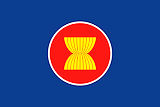

Vietnam wird Mitglied der ASEAN.
1995-07-28

USA: Premiere des Films Operation Dumbo Drop. Er war zu großem Teil in Thailand gedreht worden.
Abb.: Filmplakat
[Copyright 1995, Walt Disney Pictures / Wikipedia. -- Fair use]
1995-08
Illegale Arbeitskräfte in Thailand:
Abb.: Illegale Arbeitskräfte (Tausend), August 1995 (Schätzung)
[Datenquelle: Guns, girls, ... (1998), S. 175]
1995-08-02

El Monte Thai Garment Slavery Case
Abb.: Lage von El Monte
[Bildquelle: OpenStreetMap. -- Creative Commons Lizenz (Namensnennung, share alike)]
"On August 2, 1995, 72 Thai nationals were found working in conditions of slavery in a makeshift garment factory consisting of a row of residential duplexes in El Monte, California, just east of Los Angeles.[1] This case is considered the first recognized case of modern-day slavery in the United States since the abolishment of slavery.[2] It would serve as a wake-up call for the world to the global phenomenon of human trafficking and modern-day slavery and would begin the anti-trafficking movement in the United States with the Thai Community Development Center as its pioneer.[3] The case would also lead to the passage of California laws to reform the garment industry and end sweatshop abuses through independent monitoring and a code of conduct[4] and then eventually to the Victims of Trafficking and Violence Protection Act of 2000 (TVPA) passed by the United States Congress (later known as the Trafficking Victims Protection Reauthorization Act (TVPRA).[5] The Beginning
As early as 1988, recruiters in Thailand were canvassing rural villages in the provincial parts of Thailand for garment workers.[6] Many of the garment workers came from impoverished farming families and were eager to take any opportunity to better their life circumstances. Rotchana, one of the 72 workers discovered in the sweatshop, said she wanted to go to America so she could have a better life for herself and her children.[7] She said the recruiter was kind and generous promising her a legitimate job that would enable her to quickly pay off the $4,800 loan she secured from the recruiter to pay for the plane ticket and processing fee to the United States.
Elsewhere in Thailand, many others were hearing the same story. They were taken to the airport and given expensive jewelry to wear so that they would appear to be wealthy tourists. Once the plane touched down, the recruiters took the jewelry, their passports and their money. They transported the workers to the El Monte complex—a row of two story buildings with boarded up windows and a fence surrounding the entire compound topped with barbed wire and spikes facing inward.[8] Two guards armed with guns, knives and baseball bats patrolled the building twenty four hours a day.
Once at the El Monte complex, the Thai nationals were forced to sew clothing seventeen to twenty two hours a day.[9] They were not allowed any contact with the outside world and their letters home were censored, opened and read to insure no news of their captivity would reach home.[10] They were not allowed breaks even when sick[11] or any social interactions with each other.[12] They were under 24/7 surveillance by armed guards.[13] Some were held against their will for as long as seven years.[14]
The workers were virtually not paid as they had to work off their debt to their traffickers/employers.[15] In essence, they became indentured servants. However, they were forced to buy food and personal supplies such as toothpaste and shampoo at inflated prices from the employers residing at the complex who operated sundries in the garages.[16] Having no money to make their purchases, these amounts for the rent and personal items would just be tacked on to their debts. Therefore, their debt just kept growing with no end in sight.
They sewed clothing for many well-known brands such as Anchor Blue, B.U.M., High Sierra, CLEO and Tomato Inc.[17] The workers were forced to wake up at six every morning and worked under the watchful eyes of their Thai national employers who included Suni Manasurangkun and her four sons and two daughters-in-law.
The workers were warned if they dared escape, both they and their families back home would be physically harmed.[18] They were also threatened that they will be caught by United States authorities who will shave their heads and deport them back to Thailand. The threat of retaliation was constant and relentless. The guards even showed them a picture of the last man who had tried to escape—he had been beaten.
Discovery and FreedomThe barbed wire, Rotchana and the others later discovered, had been installed after one victim escaped from a second story window.[19] Too scared to contact the police, the woman told her story only to her boyfriend years later during her freedom.[20] But eventually the story was repeated by her co-worker and reached the ears of State of California Deputy Labor Commissioner TK Kim who was inspecting the garment factory where she, her boyfriend, and the co-worker were working.
On August 1, 1995, Deputy Labor Commissioner TK Kim came to the office of the Thai Community Development Center (Thai CDC) and met with its Executive Director, Chanchanit Martorell, and requested the Thai Community Development Center’s participation in a multi-governmental agency raid on the El Monte compound.[21] These agencies participating in the raid included the State of California Labor Commission, the United States Department of Labor, the United States Marshals, the State of California Occupational Safety and Health Administration, the State of California Employment Development Department, the El Monte Police, and the Thai Community Development Center.[22] At the pre-dawn hour of 5 am on August 2, 1995, the raid occurred on the El Monte slavery compound.[23] The law enforcement authorities which included the El Monte Police and the Federal Marshals secured the site first in the raid of the El Monte compound and the rest of the agencies including Thai CDC followed in to find the workers and separate them from the employers.[24] Chanchanit Martorell, the Executive Director of the Thai CDC, participated in that raid and once on the scene, started speaking to the frightened workers in their native tongue calming their fears and reassuring them that they were now liberated and no harm will come to them. She explained who Thai CDC was and the role it will play in bringing them relief and helping them pursue justice.[25]
From the El Monte compound, instead of being turned over to Thai CDC to be sheltered and cared for as promised, the workers were transported to the Immigration and Naturalization Services (INS) detention where the workers were detained and held captive again but this time in the hands of the United States government for another nine days.[26] Thai CDC and its ally, the Korean Immigrant Worker Advocates immediately formed a broad coalition of civil, immigrant, workers’ rights organizations that included the Coalition for Humane Immigrant Rights of Los Angeles (CHIRLA), Korean Immigrant Worker Advocates (KIWA - known today as the Koreatown Immigrant Workers Alliance [한인타운 노동연대]), Asian Pacific American Legal Center (APALC – known today as the Asian Americans Advancing Justice), and the Union of Needletrades, Industrial and Textile Employees (UNITE) to fight for the release of the workers from detention.[27] During those nine days, the coalition visited the detention center demanding access to the El Monte workers, held press conferences and sit-ins, and pressed for their immediate release into the care of Thai CDC.
After nine long days and nights in detention – a period during which the workers were shackled whenever they were transported between the INS holding tanks in Downtown Los Angeles and the federal detention center at San Pedro Terminal Island – the workers were finally permitted to take off their orange prison garb and put on their own clothes and leave INS into the care of Thai CDC. They were allowed to board a donated yellow school bus arranged by CHIRLA and head for temporary shelters arranged by Thai CDC including shelters belonging to the Methodist Church in North Hollywood, the Episcopal Church in Tujunga, and the Filipino American Service Group, Inc. (FASGI) in Los Angeles only after UNITE was able to persuade the United States magistrate to allow the workers to be released on “signature bonds” as opposed to cash bonds as a way of securing the workers’ return to court to testify as witnesses in the criminal prosecution of their captors as the workers were now designated by the United States federal court as material witnesses. Thai CDC arranged for those bonds to be signed by its supporters and allies.[28]
Thai CDC began the arduous task of providing the workers with emergency relief and resettlement assistance.[29] It obtained work authorizations[30] and social security numbers for the workers, held meetings with the coalition and the workers on pursuing their redress and restitution while participating in KIWA’s Retailer Accountability Campaign to reform the garment industry where the workers also participated and learned to become activists themselves,[31] created a support fund for the workers, and assisted the workers in obtaining permanent housing, healthcare, employment, legal, language, and acculturation assistance.[32]
Seven of the on-site operators of the sweatshop were taken into federal custody and pled guilty to criminal counts of involuntary servitude and conspiracy.[33] Two brothers evaded arrest and fled to Thailand and are still considered fugitives by the United States government.[34]
Since the United States did not have immigration relief laws in place at the time for trafficked victims, the workers were at risk of being deported soon after the successful prosecution of their traffickers.[35] The case was prosecuted by Assistant US Attorneys, Michael Gennaco and Tom Warren.[36] INS Special Agent Philip Bonner utilized another law to help keep them in the country.[37] His clever use of the S visas, [38] colloquially known as “snitch” visas used for drug snitchers in drug trafficking cases, not only allowed the victims a reprieve while in the United States but secured the ability of the workers to adjust to permanent legal residency status after three years of continued presence in the United States. Since the workers fell under this category, they were able to remain in the United States avoiding deportation where they most certainly would have faced retaliation from their traffickers who are in Thailand.[39]
A civil case was also pursued on the behalf of the workers. On the civil case, the workers won a $4 million settlement from the retailers and manufacturers who profited from their slave labor.[40] The legal agencies that helped the workers with the civil suit were the Law Firm of Dan Stormer and Della Behan and several legal aid organizations.[41]
The families of the workers were reunited with them here in the United States and the workers have since become independent and productive individuals who found steady employment outside the
garment industry or became business owners[42] with the help of Thai CDC’s small business program and entrepreneurship training[43] and are now naturalized United States citizens[44] and spokespersons[45] against human trafficking and modern-day slavery.
MediaThe play Fabric (play) was based on the events of the case."
[Quelle: https://en.wikipedia.org/wiki/Koreatown_Immigrant_Workers_Alliance. -- ZUgriff am 2016-03-21]
1995-08-06


Die USA und Vietnam nehmen diplomatische Beziehungen auf.
1995-08-08
Die Regierung erlaubt den Test eines Impfstoffs gegen HIV/AIDS
1995-08-08
Zeitschrift Matichon (มติชน): Der Anti-Homosexuellen-Psychologe Wanlop Piyamanotham (ดร. วัลลภ ปิยะมโนธรรม) schreibt gegen Anjaree (อัญจารี), einen Verein homosexueller Frauen:
"Anjaree [อัญจารี] has opened up to the public for the primary reason of making more lesbians, because Anjaree thinks it is a normal thing, and they are without shame. This will make our society be laughed at, as being all lesbians. . . . Whoever is lesbian should be quiet about it. It is not necessary to announce it. You do not have to make the whole country follow suit. You should not make it a bigger trend than it already is. I do not agree with activities that have Westerners come and explain about lesbians to Thai people. You do not need to have Westerners (farang) [ฝรั่ง] be behind-the-scene supporters for things that they do or say is the right thing. The media should be quiet. They do not need to talk about this and to make people think this is something they should be interested in." [Übersetzt in: Sinnott, Megan J.: Toms and dees : transgender identity and female same-sex relationships in Thailand. -- Honolulu : University of Hawaii Pr., 2004. -- 261 S. : Ill. ; 24 cm. -- ISBN 0824828526. -- Zugl. Diss., Univ. of Wisconsin - Madison, 2002. -- S. 168]
1996-08-10

Laut Deutsche Presse-Agentur (dpa) verliert Bangkok wegen des Verkehrschaos jährlich ca 2,4 Milliarden US-$ an Treibstoffkosten, Zeit und Krankheitskosten. Die Motorradtaxiflotte in Bangkok erwirtschaftete 1994 ca. 200 Mio. US-$. Die Anzahl der Motorradtaxis in Bangkok beträgt schätzungsweise 40.000.
1995-08-11
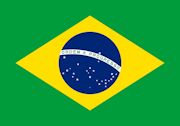
Erstflug eines brasilianischen Regionalverkehrsflugzeugs der Embraer-ERJ-145-Familie. Die Royal Thai Navy und die Royal Thai Army werden Flugzeuge dieser Typen-Familie in Dienst stellen.
Abb.: Embraer-ERJ-135LR der Royal Thai Navy, 2011
[Bildquelle: Takeaway / Wikimedia. -- GNU FDLicense]
1995-08-13
Es erscheint
Raising price of water will curb its profligate wastage. -- In: The Nation <Bangkok>. -- 1995-08-13
"But most of the country’s water supply—an estimated two-thirds—is still wasted. Around one-third of Bangkok’s water supply is lost due to a leaky distribution system, and the waste is even greater in the countryside, which uses from 70 to 90 percent of the country’s supply. The Agriculture Ministry estimates that only 30 to 40 percent of irrigation water available is put to use. As a result, Thailand consumes about 600 cubic meters of fresh water per person, compared to 453 cubic meters per person in Korea and 128 cubic meters per person in Singapore, which both have much higher GDPs per capita. Thailand’s inefficiency is caused in part because more than thirty agencies scattered through seven ministries all have some say in water management." [Quelle: Fahn, James David <1965 - >: A land on fire : the environmental consequences of the Southeast Asian boom. -- Boulder : Westview, 2003. -- 365 S. ; 24 cm. -- ISBN 0-8133-4267-8. -- S. 107. -- Fair use]
1995-08-21

Prinz Thitiphand Yugala (หม่อมเจ้าฐิติพันธุ์ ยุคล, geb. 1935) wird vergiftet. Er stirbt am 1995-08-27. Vermutliche Mörderin: seine Adoptivtochter, Mom Chalasai Yugala aka. Look Pla (หม่อมชลาศัย ยุคล ณ อยุธยา - หม่อมลูกปลา, ca. 1972 - ), die er seit deren 13 Lebensjahr sexuell missbraucht hat. Die Boulevardpresse - vor allem Khao Sod (ข่าวสด) und Thai Rath (ไทยรัฐ) - hat für lange Zeit ihr Thema.
1995-08-24

Microsoft bringt Windows 95 auf den Markt.
Abb.: Windows®95
[Fair use]
1995-09

Der Mönch Luang Phor Pawana Buddho verlässt den Orden, nachdem neun Bergvölker-Mädchen ihn als ihren Vergewaltiger identifiziert haben. Der Abt beteuert seine Unschuld.
Abb.: Lage der Provinz Nakhon Pathom (นครปฐม)
[Bildquelle: OpenStreetMap. -- Creative Commons Lizenz (Namensnennung, share alike)]
"Ex-abbot gets 160 years for rapes
("The Australian," June 23, 2004)A FORMER Buddhist abbot has been sentenced to 160 years in prison for raping nine underage girls living at his temple west of the Thai capital, court officials said today.
Chamlong Khonsue, 55, known as Pra Pawana Buddho when he presided over the Sampran Temple in Nakhon Pathom (นครปฐม) province, was convicted along with six former nuns who procured the girls for him between 1988 and 1995.
The Criminal Court found Chamlong guilty of 28 counts of rape, molestation and attempted rape on the girls, all aged under 15 and from the hill tribes who live in Thailand's northern region bordering Myanmar.
Under Thai law, he will serve a maximum sentence of 50 years in prison.
The former nuns, who were found guilty of luring the girls to the temple for Chamlong to molest, were given sentences ranging between 10 and 30 years.
Chamlong's conviction is the latest in a series of scandals involving Thailand's Buddhist clergy which have tarnished its reputation in recent years.
In 2002, a monk was charged with embezzling 95 million baht ($3.38 million) from his temple, and a monk brandishing an AK-47 assault rifle stormed the Thai parliament and took 20 staff hostage before he was overpowered.
The previous year, another abbot was forced to quit after being caught with prostitutes in karaoke bars, while another was accused of raping an 11-year-old girl and another was censured for amassing a collection of 60 classic cars.
This week, a prominent monk agreed to strip corporate sponsorship logos from his famous Bangkok temple after the brash advertisements caused an uproar in the deeply religious kingdom."[Quelle: http://wwrn.org/articles/7236/?&place=thai-myanmar§ion=buddhism. -- Zugriff am 2011-12-20]
1995-09-05

Abb.: Sanitsuda Ekachai (สนิทสุดา เอกชัย)
[Bildquelle: FAO]Bangkok Post: Sanitsuda Ekachai (สนิทสุดา เอกชัย, 1955 - ): "Falling from grace."
Über die neuesten Mönchsskandale (Vergewaltigungen). Auch über die Korruption (Bestechung und Vetterleswirtschaft) bei der Vergabe von Titeln und Rängen an Mönche (mit entsprechendem Einkommen). Das Vermögen von 200 Tempeln in Bangkok wird auf 6 Milliarden Baht geschätzt, es gibt aber keine offiziellen Zahlen. Das Geschäft mit Amuletten floriert. Phra Dhammapitaka (พระธรรมปิฎก = Prayudh Payutto - ประยุทธ์ ปยุตฺโต, 1938 - ): "Wir müssen uns ernstlich fragen, ob wir Anhänger des Buddhismus oder des Okkultismus sind." Geschäftstüchtige Mönche haben oft einflussreiche Politiker und Geschäftsleute als Anhänger.
Abb.: Mönch bei der Amulett-Herstellung, Chiang Mai (เชียงใหม่), 2011
[Bildquelle: Chris Taylor. -- http://www.flickr.com/photos/bwaters23/5450684256/. -- Zugriff am 2011-09-25. -- Creative Commons Lizenz (Namensnennung, keine kommerzielle Nutzung, share alike)]
1995-09-15
Die weltweite Unterhaltungsindustrie einigt sich auf einen einheitlichen Standard für DVDs.
Abb.: DVD
[Fair use]
Abb.: Laden mit DVD-Raubkopien, Thailand 2008
[Bildquelle: Alexander Klink / Wikimedia. -- Creative Commons Lizenz (Namensnennung)]
1995-09-25
Durch Kabinettsbeschluss wird das World Boxing Council Muaythai (WBC Muaythai, มวยไทยสภามวยโลก) gegründet. Es soll Muay Thai (มวยไทย, Thai Boxing) als kulturelles Erbe Thailands schützen und die internationale Verbreitung regulieren.
Abb.: ®Logo
[Bildquelle: Wikipedia. -- Fair use]
Abb.: Muay Thai (มวยไทย), Chiang Mai (เชียงใหม่), 2010
[Bildquelle: pokeken. -- http://www.flickr.com/photos/pokeken/5203827284/. -- Zugriff am 2011-12-20. -- Creative Commons Lizenz (Namensnennung, keine kommerzielle Nutzung, keine Bearbeitung)]
Abb.: Lage von Chiang Mai (เชียงใหม่)
[Bildquelle: OpenStreetMap. -- Creative Commons Lizenz (Namensnennung, share alike)]
"World Boxing Council Muaythai or WBC Muaythai is commissioned under the jurisdiction of the World Boxing Council (WBC) as a non-profit organization to regulate, control and supervise professional Muay Thai (มวยไทย, Muaythai) events and their respective jurisdictions worldwide. The organization also adheres to the standard rules and regulations for all Muay Thai competition as approved by the Board of Boxing Sport (Office of Professional Sports) Sports Authority of Thailand. WBC Muaythai has its own Constitution and Rules and Regulations, aiming to promote the sport as an acclaimed fighting art, and foster muaythai championships in all weight divisions with the highest levels of professional competition, gain greater popularity, recognition and professional status and evolve into becoming the world’s premier fighting art."
[Quelle: http://en.wikipedia.org/wiki/World_Boxing_Council_Muaythai. -- Zugriff am 2011-12-20]
1995-09-29
Premiere des Films เกิดอีกทีต้องมีเธอ (Dark Side Romance) von Prachya Pinkaew ( ปรัชญา ปิ่นแก้ว, 1962 - )
Abb.: Filmplakat
[Bildquelle: Wikipedia. -- Fair use]
1995-10

Lufthansa und Thai Airways International beginnen Code sharing.
1995-10-01 - 1996-09-30
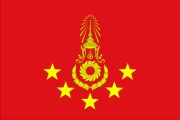
General Pramon Plasindhi (พลเอก ประมณฑ์ ผลาสินธุ์, 1935 - ) ist Commander-in-Chief of the Royal Thai Army (ผู้บัญชาการทหารบก).
Abb.: Pramon Plasindhi (พลเอก ประมณฑ์ ผลาสินธุ์)
[Bildquelle: http://www.rta.mi.th/command/command29.jpg. -- Zugriff am 2015-06-07. -- Fair use]
1995-10-08
Bei schweren Überschwemmungen entkommen Hunderte von Krokodilen aus Krokodil-Farmen in Zentralthailand.
1995-10-09
Tod von MR Kukrit Pramoj (หม่อมราชวงศ์ คึกฤทธิ์ ปราโมช, geb. 1911).
Abb.: MR Kukrit Pramoj (หม่อมราชวงศ์ คึกฤทธิ์ ปราโมช)
[Bildquelle: Wikimedia. -- Public domain]
Abb.: MR Kukrit Pramoj (หม่อมราชวงศ์ คึกฤทธิ์ ปราโมช)
[Bildquelle: th.Wikipedia. -- Fair use]

"I remember that after the king and the queen visited MR Kukrit Pramoj (คึกฤทธิ์ ปราโมช) at his house on Doi Khun Taan in Lamphun/Lampang on the border of the two provinces, MR Kukrit had his toilet bowl that the king had used during his visit destroyed. As for his chair on which the king sat, he pasted golden leaves on it, kept it in a high place, and did not permit anyone to sit on it." [Quelle: Vasit Dejkunjorn (วสิษฐ เดชกุญชร) <1929 - >: In His Majesty's footsteps : a personal memoir. -- Bangkok : Heaven Lake Press, 2006. -- 307 S. : Ill. ; 23 cm. -- ISBN 978-974-94125-8-9 -- Originaltitel: รอยพระยุคลบาท (2001). -- S. 153]
"Kukrit Pramoj (Thai: คึกฤทธิ์ ปราโมช, gesprochen [kʰɯ́krít praːmôːt]) auch Pramoja, vollständiger Name: Mom Rachawong Kukrit Pramoj - หม่อมราชวงศ์คึกฤทธิ์ ปราโมช (* 20. April 1911 in der Provinz Singburi (Thailand); † 9. Oktober 1995 in Bangkok) war zwischen 1975 und 1976 Premierminister von Thailand. Kukrit wurde als Sohn von Prinz Kamrob und Mom Daeng Bunnag geboren und ist ein Bruder von Seni Pramoj.
Seine Ausbildung absolvierte er zunächst an der Wattana Wittayalai (Wanglang)-Schule und an der Suan-Kulab-Wittayalai-Schule. Er setzte ein Studium der Wirtschaftswissenschaft am Trent College und der Politikwissenschaft am Queen’s College der Universität Oxford in Großbritannien fort.
Nachdem er nach Thailand zurückgekehrt war, arbeitete er in der obersten Finanzbehörde des Landes und wurde später Sekretär des Beraters für den Finanzminister. Er verließ den Staatsdienst, um für die Siam Commercial Bank in Lampang zu arbeiten. Während des Zweiten Weltkriegs diente er als einfacher Soldat in der thailändischen Armee. Nach dem Krieg arbeitete er als Chef der Zentralverwaltung und als Leiter der Kreditabteilung der neu gegründeten Bank von Thailand. Wenig später wurde er Geschäftsführer der Bangkok Commercial Bank.
1988 beförderte man Kukrit zum Generalmajor der königlichen Leibgarde.
Kukrit ist der Gründer der Progress Party (Fortschrittspartei), die er 1945 ins Leben rief. Die Fortschrittspartei war die erste Partei im eigentlichen Sinne, die sich in Thailand bildete und am öffentlichen Diskurs teilnahm. Später gründete er eine neue Partei, die Demokratische Partei Thailands und half auch bei Bildung der Social Action Party.
Am 26. Januar 1975 gewann Kukrit einen Sitz im Parlament. Da die Demokraten die meisten Sitze erobert hatten, wurde er zum Premierminister ernannt. Dennoch erhielt er nicht die erforderliche Mehrheit im Parlament. Er musste deshalb eine Koalitionsregierung bilden.
Während seiner Amtszeit öffnete Kukrit in Übereinstimmung mit der Politik der friedlichen Koexistenz das Land gegenüber der Volksrepublik China. Mit zahlreichen Projekten versuchte er, die soziale Lage der Menschen in den ländlichen Provinzen zu verbessern und neue Arbeitsplätze zu schaffen. Er sorgte für die Bildung der Bangkok Mass Transition Authority (BMTA), die heute den öffentlichen Personennahverkehr der Hauptstadt organisiert.
Am 12. Januar 1976 löste Kukrit das Parlament auf und trat zurück, um politische Instabilität zu vermeiden.
Kukrit gab schließlich auch seine Ämter bei der Social Action Party auf und zog sich auf seinen Sitz in Soi Sanplu (Bangkok) zurück.
Kukrit Pramoj starb am 9. Oktober 1995 in Bangkok."
[Quelle: http://de.wikipedia.org/wiki/Kukrit_Pramoj. -- Zugriff am 2011-10-06]
1995-10-16
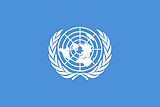
Als erster Thai hat Ministerpräsident Banharn den Vorsitz über die UNO-Generalversammlung. Er darf fünf Minuten lang eine Rede halten:
"In this day and age ... where sustainable development poses a challenge, the UN is more important than ever. We should see that it concentrates on stopping people from killing each other, getting people to treat each other fairly, and helping people to live in an environment of their own choosing." So sprach Banharn.
1995-10-18
Eine Untersuchung bei 9000 Essensverkäufern in Bangkok zeigt, dass das Essen von über 50% Coli-Bakterien über das zulässige Höchstmaß enthalten. 45% der Verkäufer haben eine hohe Anzahl Coli-Bakterien an den Händen. Coli-Bakterien stammen meist aus menschlichem oder tierischem Kot. Kakerlaken, Ratten und Schmutz gehören zum Alltag der Essensbuden auf den Gehsteigen. Das Gesundheitsministerium erlässt darum neue Hygienevorschriften, vergisst aber den Verkäufern Händewaschen vorzuschreiben.
1995-10-20
Brand des Einkaufszentrums in Ngam Wong Wan (งามวงศ์วาน), Bangkok.
Abb.: Lage von Ngam Wong Wan (งามวงศ์วาน)
[Bildquelle: OpenStreetMap. -- Creative Commons Lizenz (Namensnennung, share alike)]
1995-10-22


Rechtzeitig zur Sonnenfinsternis hebt das Innenministerium das Einreiseverbot für australische Journalisten auf. Das Einreiseverbot war erlassen worden, weil die Zeitung "The Age" einen Cartoon und eine Story veröffentlicht hatte zur Amnestierung eines Australiers, der wegen Drogen im Gefängnis saß. Story und Cartoon werden in Thailand als Majestätsbeleidigung angesehen.
1995-10-24
Totale Sonnenfinsternis, die erste in Thailand seit 1955. Da eine Sonnenfinsternis angeblich Unglück bringt, sind einige Politiker ins Ausland geflüchtet, wo keine Sonnenfinsternis sichtbar ist.
1995-10-26

100. Tag seit dem Tod Ihrer Königlichen Hoheit Prinzessin Sri Nagarindra (ศรีนครินทรา, 1900 - 1995-07-18), Mutter der Könige Ananda Mahidol (Rama VIII.) und Bhumibol (Rama IX.). Ende der Trauerperiode. Feierliche religiöse Zeremonien, geleitet vom Sangharaja (สังฆราช). Die Chinesen Bangkoks haben einen Riesenschrein gebaut, wie er für einen chinesischen Kaiser vorgesehen war. Während der Trauerperiode haben 2,3 Mio Personen dem Leichnam der Königinmutter die letzte Ehre erwiesen.
1995-11

"One million meter deal" mit den kambodschanischen Ministerpräsidenten Hun Sen (ហ៊ុន សែន, 1952 - ) und Norodom Ranariddh (នរោត្តម រណឫទ្ធិ, 1944 - ). Global Witness beschuldigt 1996 Armeechef Chavalit Yongchaiyudh (ชวลิต ยงใจยุทธ, 1932 - ), dass er in Holzhandel mit Kambodscha verwickelt ist und geholfen hat den Deal auszuhandeln.
""Last November people on the [Thai] border were saying they'd be getting timber by the end of the year, mainly from around Pursat [ខេត្តពោធិ៍សាត់] and Pailin [ប៉ៃលិន]. We thought something was going on, and it turned out to be the 'one million meter' deal," Alley said.
Abb.: Lage von Pursat [ខេត្តពោធិ៍សាត់] and Pailin [ប៉ៃលិន]
[Bildquelle: OpenStreetMap. -- Creative Commons Lizenz (Namensnennung, share alike)]Seventeen Thai logging companies--16 of which were dealing with the Khmer Rouge--had struck a deal with the Cambodian Prime Ministers to export one million cubic meters of cut logs.
Prince Norodom Ranariddh [នរោត្តម រណឫទ្ធិ, 1944 - ] argued that the logs would have gone across anyway, and that the Government should get some of the profit.
The outcry prompted the International Monetary Fund to freeze its funding to Cambodia. Aid donors put logging concerns at the top of the agenda at the Tokyo aid summit. Phnom Penh had to back down, and the Khmer Rouge in turn were "cheated" out of income worth $35 million or more."
[Quelle: Grainger, Matthew: Thais forced to play key role in breaking the KR [Khmer Rouge]. -- Online: https://groups.google.com/forum/#!msg/bit.listserv.seasia-l/W2u7mhU3bDU/_PS8QuDL-lsJ. -- Zugriff am 2016-02-09. -- Fair use]
1995-11-04
Brand am Siam Center (สยามเซ็นเตอร์), Bangkok. Fünf Tote.
Abb.: Lage des Siam Center (สยามเซ็นเตอร์)
[Bildquelle: OpenStreetMap. -- Creative Commons Lizenz (Namensnennung, share alike)]
1995-11-11
Tod des nordostthailändischen Dichters Prasert Jandam (ประเสริฐจันดำ, geb. 1945). Prasert war sozial sehr engagiert, wurde Mitglied der Communist Parti of Thailand (พรรคคอมมิวนิสต์แห่งประเทศไทย), musste 1976 in den Dschungel fliehen, wurde nach seiner Rückkehr Christ und starb alkoholkrank.
Abb.: Einbandtitel der Gedichtsammlung ร้อยกรองจากซับแดง (Poesie aus Sap Daeng). Sap Daeng (ซับแดง) ist ein Dorf in der Provinz Khon Kaen (ขอนแก่น), wo Prasert als Lehrer wirkte.
Abb.: Einbandtitel eines seiner Werke
1995-11-12
Bei Christie in London werden über 400 private Briefe von früheren Mitgliedern des Königshauses versteigert. Der Wert der Sammlung wird mit 280.000 bis 400.000 Baht angegeben. Darunter ist auch ein Liebesbrief von Prince Chakrabongse Bhuvanadh, Prinz von Phitsanulok, (1883 – 1920) (สมเด็จพระอนุชาธิราช เจ้าฟ้าจักรพงษ์ภูวนาถ กรมหลวงพิษณุโลกประชานาถ). Die Enkelin von Prinz Chakrabongse, MR Narisa Chakrabongse (นริศรา จักรพงษ์, 1956 - ), kauft die ganze Sammlung zu einem unbekannten Preis, sodass sie nicht zur Versteigerung kommt.
Abb.: MR Narisa Chakrabongse (นริศรา จักรพงษ์), 2009
[Bildquelle: The Official Site of The Prime Minister of Thailand Photo by พีรพัฒน์ วิมลรังครัตน์. -- http://www.flickr.com/photos/40561337@N07/4189154751/. -- Zugriff am 2011-12-20. -- Creative Commons Lizenz (Namensnennung)]
1995-11-19

USA: Premiere des Computeranimationsfolms Toy Story. Es ist der erste vollständig am Computer erstellte Langfilm für das Kino. Regisseur: John Lasseter (9157 - ).
Abb.: Filmplakat
[Bildquelle: Wikipedia. -- Fair use]
1995-11-22
Brand des Kaufhauses Central Chidlom in Bangkok.
Abb.: Lage des Central Chidlom
[Bildquelle: OpenStreetMap. -- Creative Commons Lizenz (Namensnennung, share alike)]
1995-11-26


US-Nachrichtenagentur The Associated Press: "Thai royals : from street sweepers to prime ministers / von Robert Horn
Danach gibt es rund 130 Linien königlichen Bluts mit 98 Prinzen und Prinzessinnen.
Der Artikel nennt als Nachfahren von Thai-Königen:
- 2 Ministerpräsidenten: M. R. Seni Pramoj (หม่อมราชวงศ์เสนีย์ ปราโมช, 1905 - 1995) und M. R. Kukrit Pramoj (ศาสตราจารย์ (พิเศษ) พลตรี หม่อมราชวงศ์คึกฤทธิ์ ปราโมช, 1911 - 1995)
- Schauspieler und Entertainer: M. R. Prom Chakrapai, M. R. Suriyavan Suriwongse, M. R. Thanadtsi Svastivatana
- 1 Travestit
- 1 Massagesalon- Unternehmer
- 1 Zeitungskolumnistin: M.R. Malinee Chakrabandhu (หม่อมราชวงศ์มาลินี จักรพันธุ์)
- 1 Klempner
- Mehrere Taxifahrer
- 1 Straßenfeger
1995-12-09 - 1995-12-17
18th Southeast Asian Games in Chiang Mai (เชียงใหม่). Thailand steht mit 157 Gold-, 98 Silber- und 92 Bronze-Medaillen auf Rang 1.
Abb.: ®Maskottchen
[Bildquelle: Wikipedia. -- Fair use]
Abb.: Lage von Chiang Mai (เชียงใหม่)
[Bildquelle: OpenStreetMap. -- Creative Commons Lizenz (Namensnennung, share alike)]Einige Feministinnen Chiang Mai's bekämpfen die verbreitete Werbung für Kondomgebrauch während der SEA Games: dadurch entstehe der Eindruck, alle Thailänderinnen seine Sexarbeiterinnen und leicht erhältlich.
1995-12-10
Gründung der Assembly of the Poor (สมัชชาคนจน).
"The Assembly of the Poor (Thai: สมัชชาคนจน) is a non-governmental organization in Thailand. Its aim is to help those affected by development projects and industries to become involved in the process of development, so that they benefit from those projects. The Assembly of the Poor is now considered to be a political voice for villagers and marginalized members of society. As an organization, it is allied with other NGOs in Thailand. When the Assembly of the Poor first began, it was accused of dismantling Thailand's unity and the democratic principles of Thai ideologies.[1] The non-governmental organization is an amalgamation of seven districts representing every region of Thailand. It is composed of urban and rural small-scale agriculturists and manual laborers. Due to its variety of members, the Assembly is able to transcend regional and class divisions.
BackgroundDuring the 1950s, Thailand's Development Agenda was at the forefront of the government and was backed by the World Bank. The rapid industrialization around the world was a driving force behind this. The World Bank gave its support to Thailand because of the government's substantial economic investment in urban infrastructure, strong market orientation, and leading role in private sector and private investment. Starting in the 1950s and accelerating in the late 20th century, Thailand was becoming an "exemplar for the rest of the developing world", according to the World Bank, IMF, and other mainstream economic organizations. In the 20th century the foreign capital was contributing so much to Thailand's growth that manufacturing was increasing, but in contrast the agriculture sector was rapidly declining. Due to the decline in the agriculture sector small-scale farmers and peasants were living in poverty. This made a large population of Thailand's people vulnerable to exploitation to the big cities such as Bangkok. It also excluded the rural farmers from rapid changes in the countries large cities as well. This began to irritate the Thai rural farmers and peasants creating a need for a vast social and environmental transformation. Community leaders and NGOs saw an urgent need to organize a fight for community rights at a National Level.[2]
EmergenceThe Assembly of the Poor began in the 1980s, but did not become highly visible in Thailand until the mid-1990s. The organization emerged when NGO activists and village leaders agreed upon the need for a core development campaign. These activists soon began to recruit not only the rural farmers of Thailand but workers from the cities as well. In 1995, the organization decided to hold a conference to coincide with the ASEAN Summit scheduled in Bangkok on 14–15 December. The Asian Cultural Forum on Development (ACFOD) and Friends of the People (Klum pheuan phrachachon, who support villagers’ groups facing dams and large-scale projects) were the main Bangkok-based NGOs that coordinated the conference.[3]
The emergence of this organization had been one of the most striking political events to happen throughout Thailand in the 1990s. The group was officially established on 10 December 1995 on International Human Rights Day. The project was instigated by a group of villagers affected by the Pak Mun dam (เขื่อนปากมูล), but these have since been joined by people concerned about other projects in the country, and by factory workers suffering from industrial injuries. The inauguration of this assembly in December 1995 was the first rural political voice that had been raised since the suppression of the Peasants' Federation in 1975.[4]
Original Leaders
Abb.: Vanida Tantiwittayapitak (วนิดา ตันติวิทยาพิทักษ์)
[Bildquelle: http://www.visalo.org/article/person16Wanida2.htm. -- Zugriff am 2011-12-20. -- "All Rights ไม่ Reserved"]Among the group's co-founders was Vanida Tantiwittayapitak (วนิดา ตันติวิทยาพิทักษ์, 1955 - 2007), who was among the student activists at Thammasat University (มหาวิทยาลัยธรรมศาสตร์) who fled Bangkok to the countryside after the brutal massacre ((เหตุการณ์ 6 ตุลา) of students during a right-wing coup. She became a leader of the Pak Mun fight in the 1990s. She died of breast cancer at age 52 on December 6, 2007.[5][6]
Mun River DeclarationDuring the proceedings of its establishment on December 10, a manifesto titled “Mun River Declaration” was created to announce the formation of the Assembly of the Poor. The declaration also criticized industrial development based on the rights to “sustainable livelihoods and political participation of local communities.” Through the declaration, the Assembly of the Poor set itself up to be the platform through which the disadvantaged could find a political voice.
Along with the Mun River Declaration, the Assembly sent a petition to the government detailing member’s grievances, quickly establishing their intent to participate politically.[7]
Key StrategiesThe Assembly of the Poor used significant and strategic steps to create the unified front that enabled them to mobilize through rural villages. Firstly, the Assembly created an "over-arching ideological critique of development" that connected specific local grievances to national government policies. Second, they made a political and national identity out of being "poor" and "victims" of development. This created a sense of shared struggle.[8]
These strategies contribute to the solid unification the Assembly exhibits during campaigns and protests. Due to these strategies, the Assembly of the Poor is able to mobilize people quickly and efficiently when campaigning or protesting against government activity and continuing its platform as a voice for the poor and marginalized.
Recent ActivitiesThe group's activities so far have included the organization of demonstrations and discussion forums; the drafting and presentation of letters of protest to the government; and the making of legislative proposals. On December 10, 1995 there was a conference held at Thammasat University of Bangkok entitled "Assembly of the Poor: The consequences of Large-Scale Development Projects". Many AOP activists along with villagers and scholars brought speeches and participated in panels to shine light on the negative effects large-scale development has on Thailand's social and ecological factors. After days of discussion, the "Mun River Declaration" was formed. This signified the refusal of the Thai society to remain passive subjects of change in their own country. The Thai people wanted a say in what was going on in their land. Many days after the declaration was formed, hundreds of AOP activists and members marched through Bangkok to submit their declaration and list of demands to the Thai government.[9]
According to the Bangkok Post the recent issues in Thailand have a lot to do with the political divisions trying to undermine the AOP. The lack of unity among the poor poses a major obstacle in the battle to a more democratic society. In the 21st century, political divisions in Thailand have weakened the movements of the Assembly of the Poor. In order for the NGO to stay in a positive direction the Bangkok Post states they must focused on;
- Natural resources
- Protection of local people's rights to manage those resources
- They also to need to move certain issues to the forefront of their political voice.
- Community rights
- An aggressive tax rate on land holdings
- Establishment of a land development fund
- Fair land distribution
The rural farmers and peasants need to form a foundation of community rights that is the constitution of how they country should run. They need to do this to enhance the future of Thailand and it rank in the global economy and that of a developing nation.
The Impact of GlobalizationMany of the members of the Assembly have been hit by pressure to modernize and the impact of globalization. In fact, thousands of families have been forcefully moved in order to build environmentally destructive dams. In other cases, local resources such as rain forest land,are being plundered by exports. The organization and victims of these changes demand compensation and right to use local resources for their own region. Other instances of protest that the organization works in do not always involve asking for things for self-interest, the ideology behind the organization is for a democratic and sustainable society that is just, participatory, transparent, compassionate, respectful and cooperative to the natural environment and the citizens.[10]
References
- The Assembly of the Poor in Thailand, From Local Struggles to National Protest Movement, Bruce D. Missingham, ISBN 974-9575-28-8
- Phongpaichit, Pasuk (1999). Civilising the State: state, civil society and politics in Thailand. Amsterdam: Amsterdam : Centre for Asian Studies Amsterdam. pp. 1–14.
- Palmgren, Pei. "Claims to Globalization: Thailand's Assembly of the Poor and the Multilevel Resistance to Capitalist Development". New York University. Retrieved 15 October 2011.
- Missingham, Bruce (November 2003). "Forging Solidarity and Identity in the Assembly of the Poor: from Local Struggles to a National Social Movement in Thailand". Asian Studies Review 27. doi:10.1111/1467-8403.00154.
- Baker, Chris (2000). South East Asia Research. IP Publishing LTD. pp. 5–29.
- Poor mourn loss of hero, The Nation (Thailand); retrieved 2007-12-06
- Hero of the poor, The Nation (Thailand); retrieved 2007-12-06
- Missingham, Bruce (September 2003). [ttp://search.ebscohost.com/login.aspx?direct=true&db=aph&AN=10832894&site=ehost-live "Forging Solidarity and Identity in the Assembly of the Poor: From Local Struggles to National Social Movement in Thailand"]. Asian Studies Review 27 (3). doi:10.1111/1467-8403.00154.
- Missingham, Bruce (September 2003). "Forging Solidarity and Identity in the Assembly of the Poor: From Local Struggles to National Social Movement in Thailand". Asian Studies Review 27 (3). doi:0.1111/1467-8403.00154.
- Palmgren, Pei. "Claims to Globalization: Thailand's Assembly of the Poor and the Multilevel Resistance to Capitalist Development". New York University. Retrieved 15 October 2011.
- Sivaraska, Sulak. "Assembly of the Poor: Siam's Poor Take Action on Their Own Behalf"."
[Quelle: http://en.wikipedia.org/wiki/Assembly_of_the_Poor. -- Zugriff am 2011-12-20]
Assembly of the Poor (สมัชชาคนจน):
Abb.: Mitglieder-Familien bzw. Beschwerden der Assembly of the Poor (สมัชชาคนจน) 1997
[Datenquelle: Missingham (2003), S. 49]
Abb.: Regionale Verteilung der Beschwerden der Assembly of the Poor (สมัชชาคนจน) 1997
[Datenquelle: Missingham (2003), S. 49]
1995-12-15

Southeast Asian Nuclear-Weapon-Free Zone Treaty (SEANWFZ) / Bangkok Treaty
"The Southeast Asian Nuclear-Weapon-Free Zone Treaty (SEANWFZ) or the Bangkok Treaty of 1995, is a nuclear weapons moratorium treaty between 10 Southeast Asian member-states under the auspices of the ASEAN: Brunei Darussalam, Cambodia, Indonesia, Laos, Malaysia, Myanmar, Philippines, Singapore, Thailand, and Viet Nam. It was opened for signature at the treaty conference in Bangkok, Thailand, on 15 December 1995 and it entered into force on March 28, 1997 and obliges its members not to develop, manufacture or otherwise acquire, possess or have control over nuclear weapons. The Zone is the area comprising the territories of the states and their respective continental shelves and Exclusive Economic Zones (EEZ); "Territory" means the land territory, internal waters, territorial sea, archipelagic waters, the seabed and the sub-soil thereof and the airspace above them.
The treaty includes a protocol under which the five nuclear-weapon states recognized by the Treaty on the Non-Proliferation of Nuclear Weapons (NPT), namely China, the United States, France, Russia and the United Kingdom (who are also the five permanent members of the United Nations Security Council) undertake to respect the Treaty and do not contribute to a violation of it by State parties. None of the nuclear-weapon states have signed this protocol."
[Quelle: https://en.wikipedia.org/wiki/Southeast_Asian_Nuclear-Weapon-Free_Zone_Treaty. -- Zugriff am 2016-09-21]
1995-12-19 - 1999-02-01

William H. Itoh ist US-Botschafter in Thailand.
ausführlich: http://www.payer.de/thailandchronik/ressourcen.htm
Zu Chronik 1996 / B. E. 2539. -- 1. undatiert